Kick off the new year by getting outside and tracking down some of Britain’s amazing winter wildlife.
Treecreeper (Certhia familiaris)
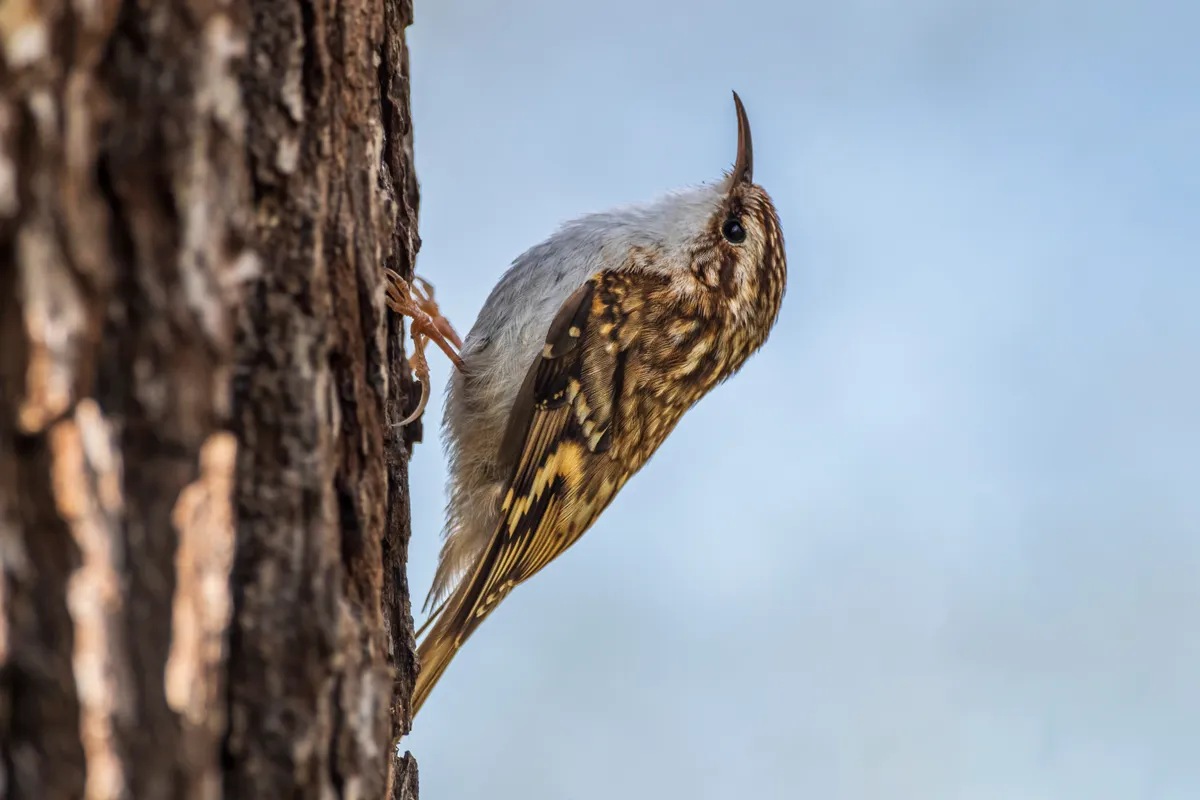
Thanks to its beautifully patterned, bark-like plumage, the treecreeper is one of the easiest woodland birds to overlook. Things are not helped by its mousy demeanour. It hesitantly inches up trunks and along and under branches, gripping the bark so tightly with its extra-long, strong claws, it could almost be part of the tree. The species feeds on insects and spiders from crevices.
But in winter, the treecreeper’s behaviour changes. It joins mixed flocks of great, blue, coal and long-tailed tits, moving through woods with them in search of food. Colourful and noisy, these flocks are far more likely to catch your attention.
In truth, the treecreeper is more of a flock follower, since it stays on the fringes of the group. And, usually, there will be only one or two treecreepers per flock – listen out for a high-pitched ‘srreee’ sound – so they are greatly outnumbered by the tits. Being in a flock is worth it though, because there are more eyes to spot danger.
By-the-wind-sailor (Velella velella)

Winter storms may bring mysterious, jelly-like ocean drifters to our shores. Lacking bones, a brain, central nervous system, heart or blood, they are nearly all water and rely on simple nerves in their tentacles to detect light and odours. Though not true jellyfish, they belong to the same giant marine phylum of animals with stings, the Cnidaria.
One of the most frequently encountered species is the by-the-wind sailor. Its gelatinous body, called a float, has a purplish gleam and several short tentacles under it, which it uses to ensnare prey. On top of the float is a sail, which catches the wind to propel the floating organism. Or rather, organisms, because this is actually a colony.
The Portuguese man o’war is another similar colonial species. Both hydrozoans usually wash up dead, sometimes in large numbers, and their beautiful colour fades in a couple of days. Don’t touch: in death, the tentacles can still sting.
Learn more about British marine wildlife:
Winter aconite (Eranthis hyemalis)
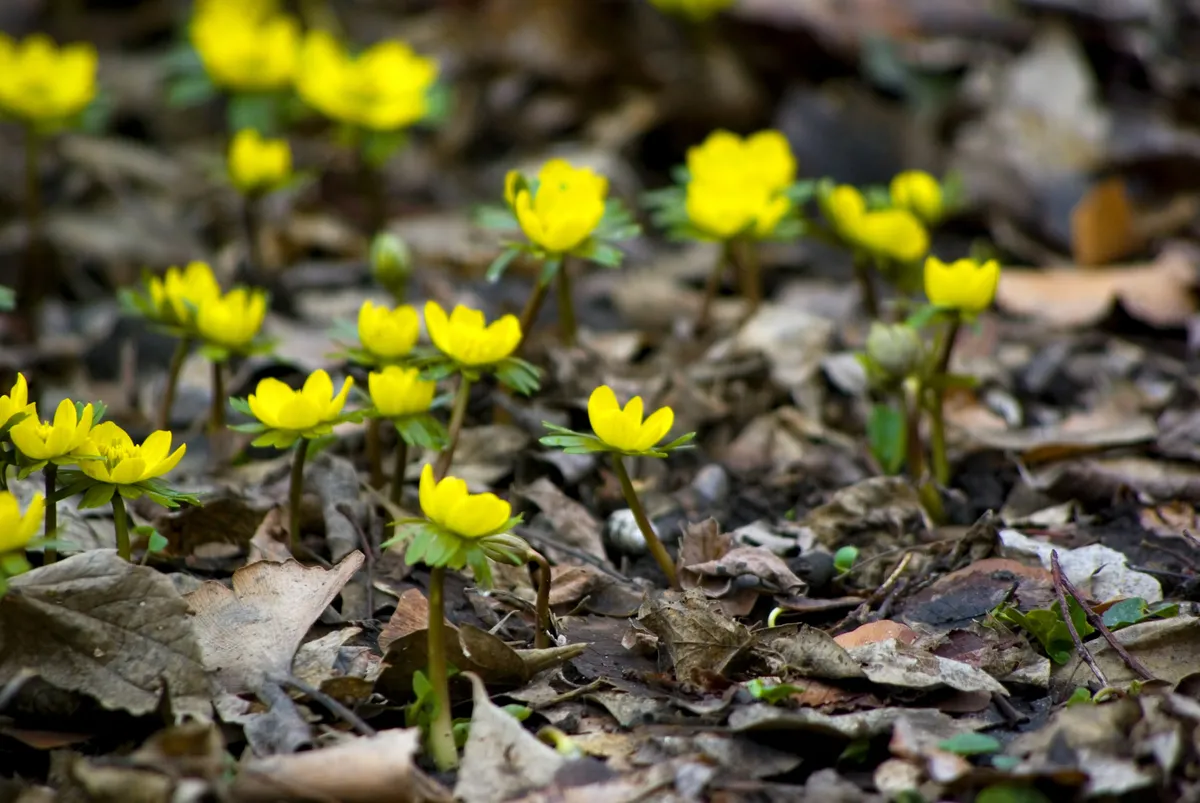
Glowing under trees like out-of-season buttercups, the cheery yellow flowers of winter aconite never fail to lift the spirits in January. Native to southern Europe, their spectacular growth so early in the year, as with crocuses and snowdrops, is fuelled by underground food stores (tubers in this case). The nectar can be life-saving for any newly emerged bumblebees.
Red kite (Milvus milvus)
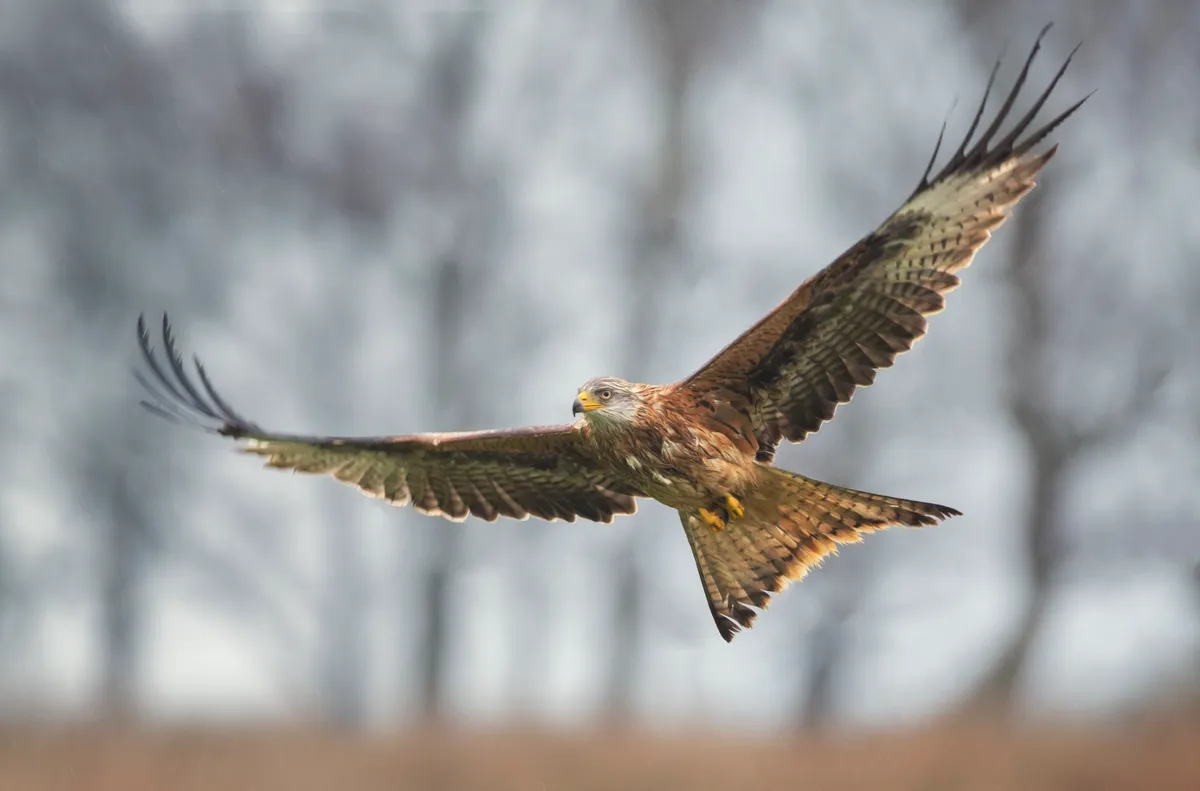
The red kite is always a sociable raptor, but especially so in winter. January sees dozens wheeling in the air together, and at feeding stations in Wales and south-west Scotland numbers often reach three figures. Since red kites were released in the 1990s, the breeding population is up almost 2,000 per cent. It must surely be Britain’s most successful species reintroduction ever.
Twigs and buds

Britain’s deciduous trees may be leafless, but that doesn’t mean they are lifeless. In January, the subtle and not-so-subtle differences in their twigs and buds come to the fore. Some species are easy to identify. Horse chestnuts have super-sticky buds covered in dark brown scales. The buds of ash are coal-black and stubby, arranged in pairs at the tips of gnarly grey twigs. Beech buds are sharp and pointed like spears, and angled away from the twig. Alder buds are purplish, on warty twigs.
Winter twigs can be surprisingly colourful. Dogwood stems are bright red (albeit not as vibrant as garden varieties), while those of spindle, a scarcer tree of ancient hedgerows, are lime-green.
“We tend to think of trees as leafy giants,” says botanist Leif Bersweden in Where the Wild Flowers Grow, “but, in the winter, we get to see a whole other side to them.”
Grey heron (Ardea cinerea)
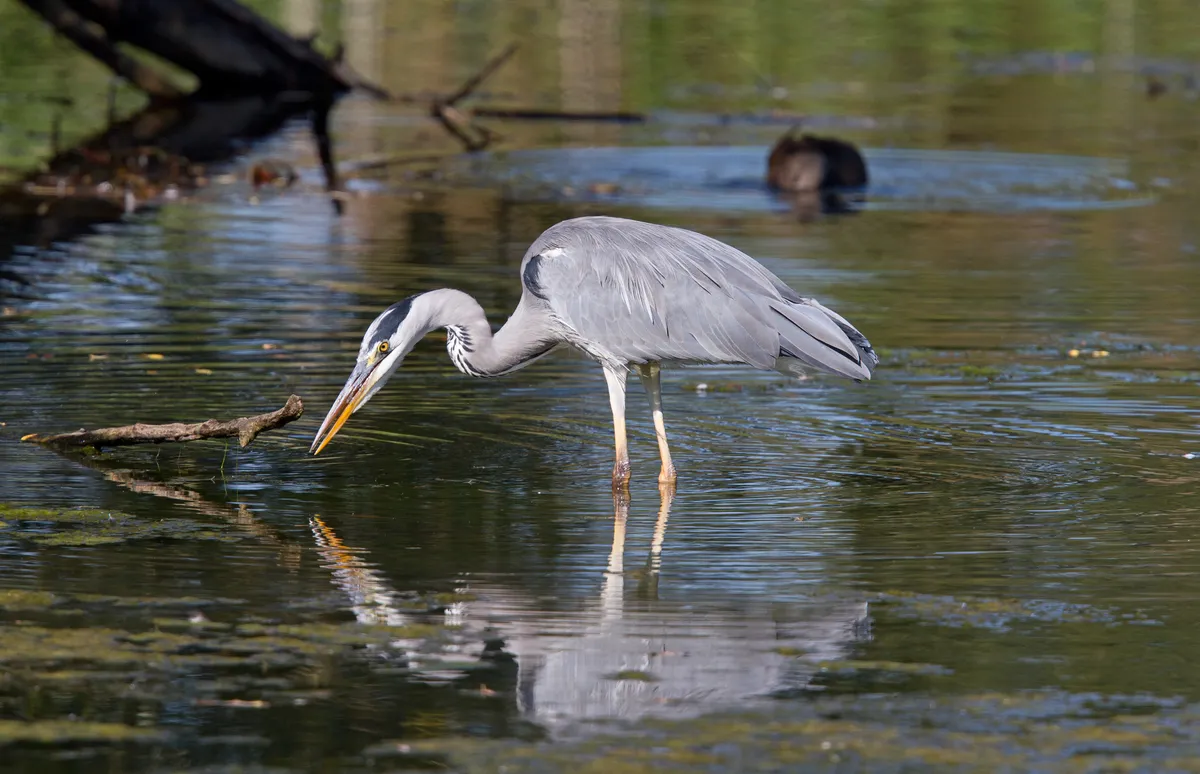
The grey heron breeding season is but weeks away – from early February, these birds start to pair up and construct their messy stick nests. In the meantime, short midwinter days can be excellent for heron watching. Grey herons do much of their hunting in the half-light around dawn and dusk, striding through the shallows or standing stock-still with a characteristic hunched neck. Approach cautiously, because they are famously nervy, quick to take off with an irritated croak. As naturalist Amy-Jane Beer says in The Flow, “herons can’t bear to be watched,” adding
it may help to scrutinise them sidelong.
Between their solitary fishing sessions, grey herons spend an inordinate amount of time standing around in fields, often in groups. It appears that while loafing they are simply digesting their last meal. Given they can swallow eels 20-30cm long, these may be pretty substantial.
Brown trout (Salmo trutta)
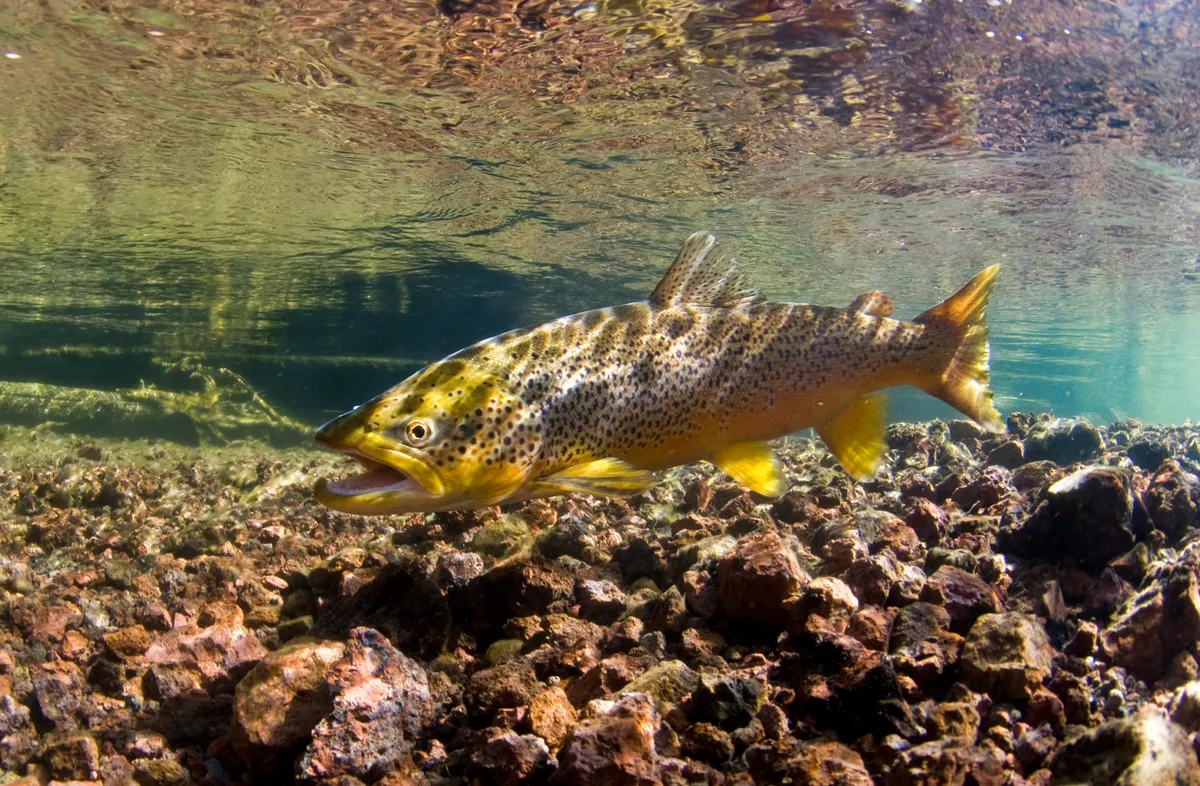
Most freshwater fish spawn in late spring, as the water temperature in rivers, lakes and ponds begins to rise. Brown trout, instead, breed in winter, with reports of spawning from November through to February and March. The rivers they favour are often those also used by our rapidly declining wild salmon, and share three features: they are chilly, well-oxygenated, (cold water carries a lot of oxygen) and have deep beds of clean gravel. River pollution is calamitous for these magnificent fish.
Before spawning can occur, the female trout – like female salmon, known as hens – must make one or more hollows in the gravel. Facing upstream, they turn on their side and thrash their powerful tail to push the stones aside. The finished scrapes, called redds, are frequently visible from the bank as pale patches lacking silt or algae. At last, the territorial male trout patrolling this section of river is able to fertilise the females’ eggs as they deposit them in the redds. But he needs to be on guard. If he’s not careful, a sneaky, lower-ranking male will swim up alongside and take his chances.
Coal tit (Periparus ater)

Researchers at Reading University estimated that we put out enough food each winter to feed a staggering 196 million birds – half the avian biomass in the UK at this time of year. Tits are some of the chief beneficiaries, with several species enjoying hefty population increases.
Among them is the coal tit, named for its sooty plumage. It is the third most common member of this delightful family in gardens, after its blue and great relatives (the long-tailed tit is not far behind in fourth place).
Coal tits have a signature feeding style. Watch them nip onto a feeder, rapidly extract a sunflower seed, and dash off again to hide it. Partly, this avoids competition. But it is also a way of building up food stores to eat later, a clever strategy to get them through the colder months.
In 2007, a lab study found that coal tits could recall the location of seeds for up to four weeks. The behaviour is suited to life in northern coniferous forests, where many coal tits live, although there are risks. By watching coal tits, great tits are able to pilfer the stored food.
Learn more about garden birds:
Eurasian curlew (Numenius arquata)
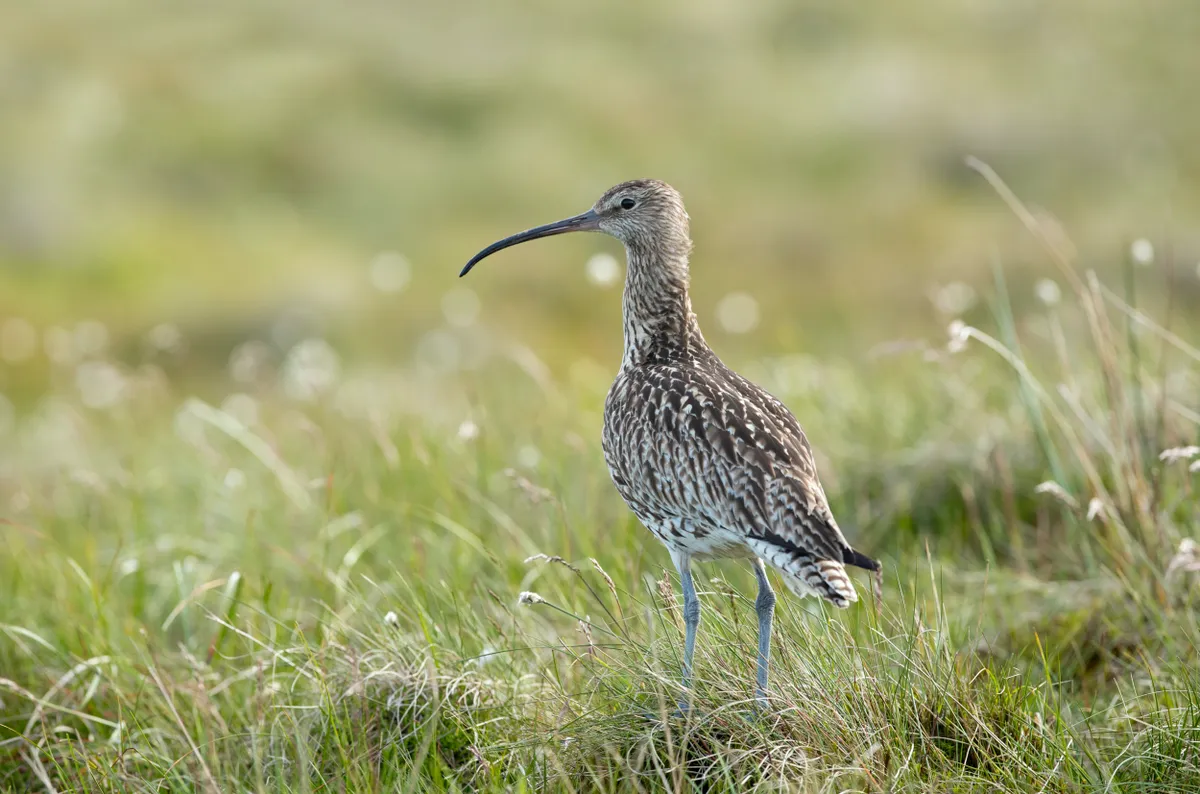
A select group of British and Irish birds have their own charity dedicated to them, including the curlew. Sadly, this reflects the extent to which they now depend on conservation action. Curlew are suffering a catastrophic decline in breeding success, most dramatic in Ireland and southern England.
In winter, the resident population doubles as migrants arrive from Russia and northern Europe. This influx means the species remains fairly widespread and easy to find on marshes and mudflats, which has the unfortunate effect of masking the scale of decline.
You can help by looking out and reporting curlews with coloured leg rings, fitted as part of various conservation or research projects. Among them is the ‘head- starting’ scheme in East Anglia, in which wild curlew eggs are collected, the chicks reared in captivity, and then released.
Hoar frost
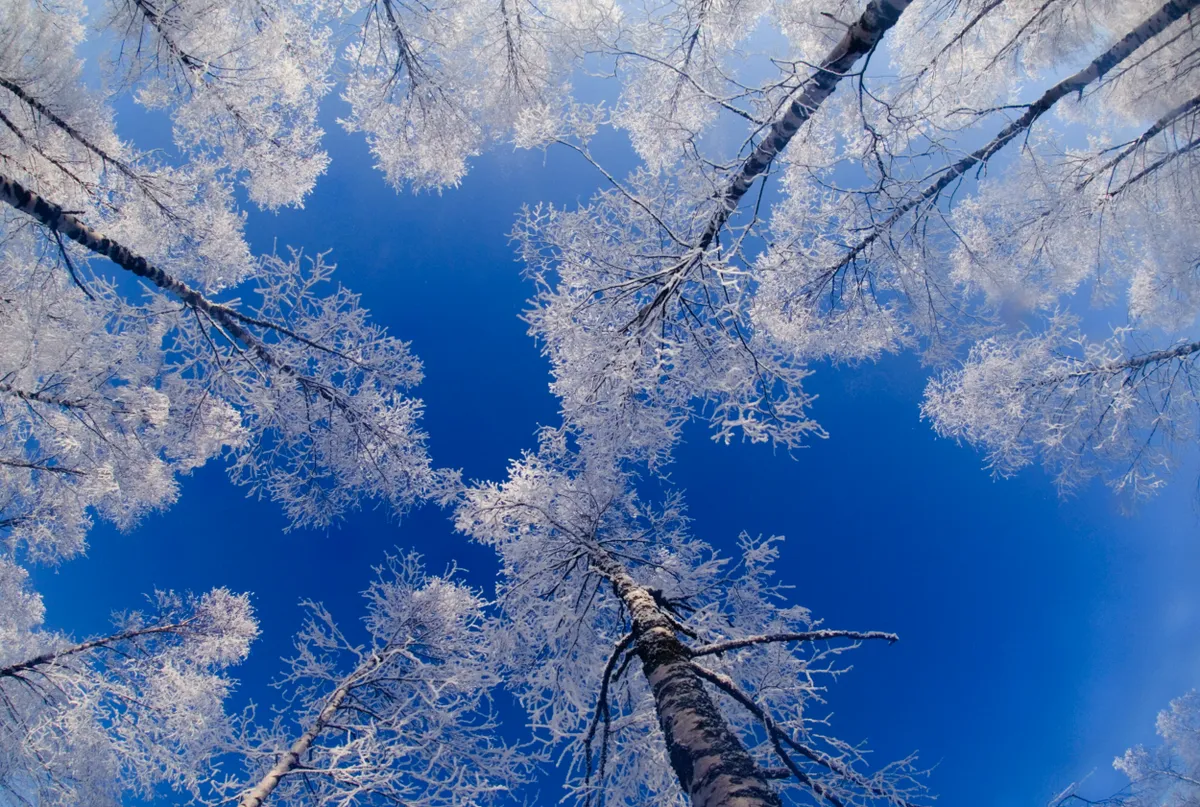
A crisp and bright January morning always feels like it’s worth several sunny starts in summer. If it follows a bitterly cold and starry night, you might also encounter one of nature’s treasures: hoar frost.
It is named after its hair-like appearance and needs specific climatic conditions to form. The exquisite feathery ice crystals form rapidly overnight on freezing branches and twigs, but soon melt, rewarding only those who head out early.
King Alfred's cakes (Daldinia concentrica)
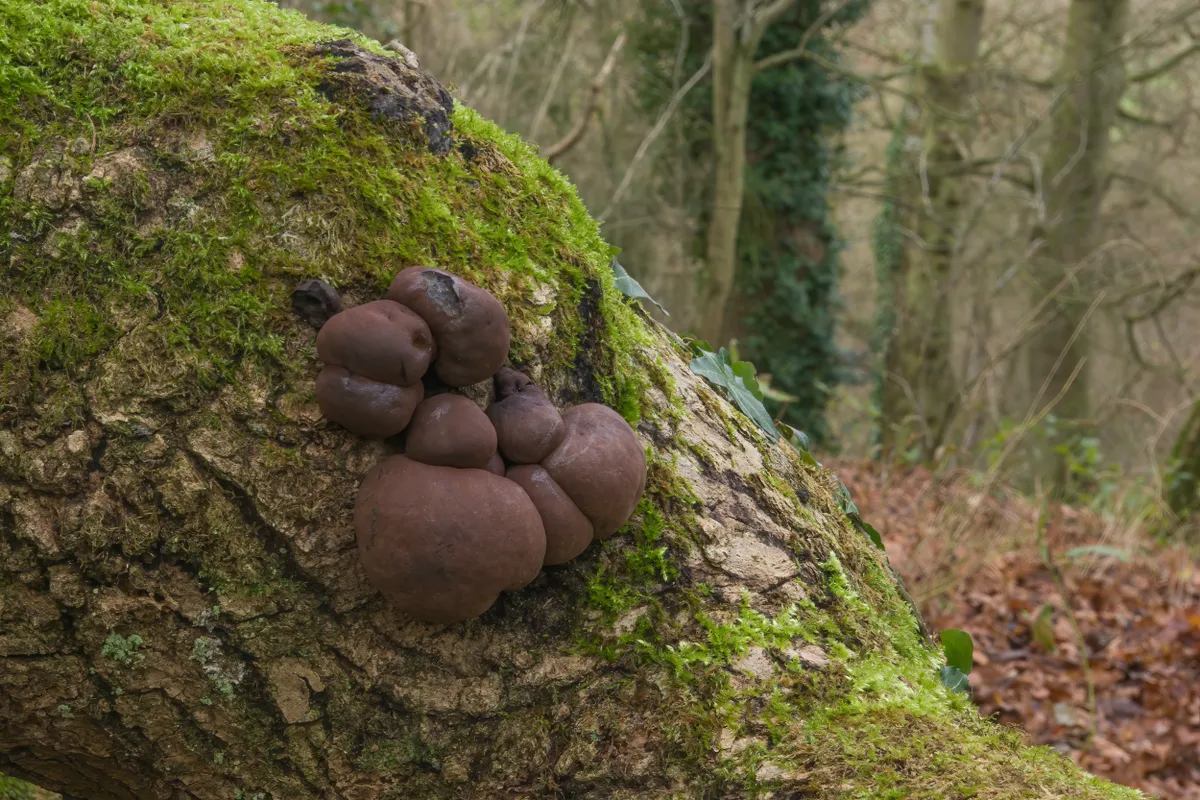
Some fungi can be found easily year-round, and this abundant species is one of them. King Alfred's cakes sprout on fallen ash branches, or sometimes on those of other deciduous trees. The lumpy fruiting bodies resemble pieces of charcoal or coal. If you remove one and cut it open, in cross- section it has neat concentric rings like those of the dead wood on which it grew.
Why the bizarre name? Legend has it that the ninth-century monarch burned some cakes he was supposed to be watching, then threw the charred remains away to hide what he had done.
‘Cramp balls’ is an equally colourful alternative name: these fungi were said to cure muscular spasms. For several thousand years they were also used as a natural fire-lighter, a trick today’s forest-school teachers are fond of demonstrating. A nice, old specimen will burn steadily, just what you need for a campfire.
Long-tailed duck (Clangula hyemalis)

The seas around Britain and Ireland host internationally important numbers of sea ducks in winter. Though the marine environment might not seem a fruitful habitat for ducks – especially when it’s blowing a hoolie – several species brave it offshore, including eider, scaup and scoters. But perhaps the smartest is the long-tailed duck.
Flocks of this globally threatened sea duck arrive from High Arctic nesting grounds, with the biggest gatherings favouring Scottish seas. The Fife coast is one stronghold. Deep divers, they forage for molluscs, crabs and occasional small fish.
Chris Packham is a fan of the species. In Red Sixty Seven, published by the BTO to raise awareness about the plight of 67 ‘red-listed’ bird species, he relates how these doughty ducks, “freckle the foam and slip over the crush of breakers, skittish in the squall, spots of flotsam on the ocean’s roiling hell”.
Pixie cup lichen (Cladonia sp)
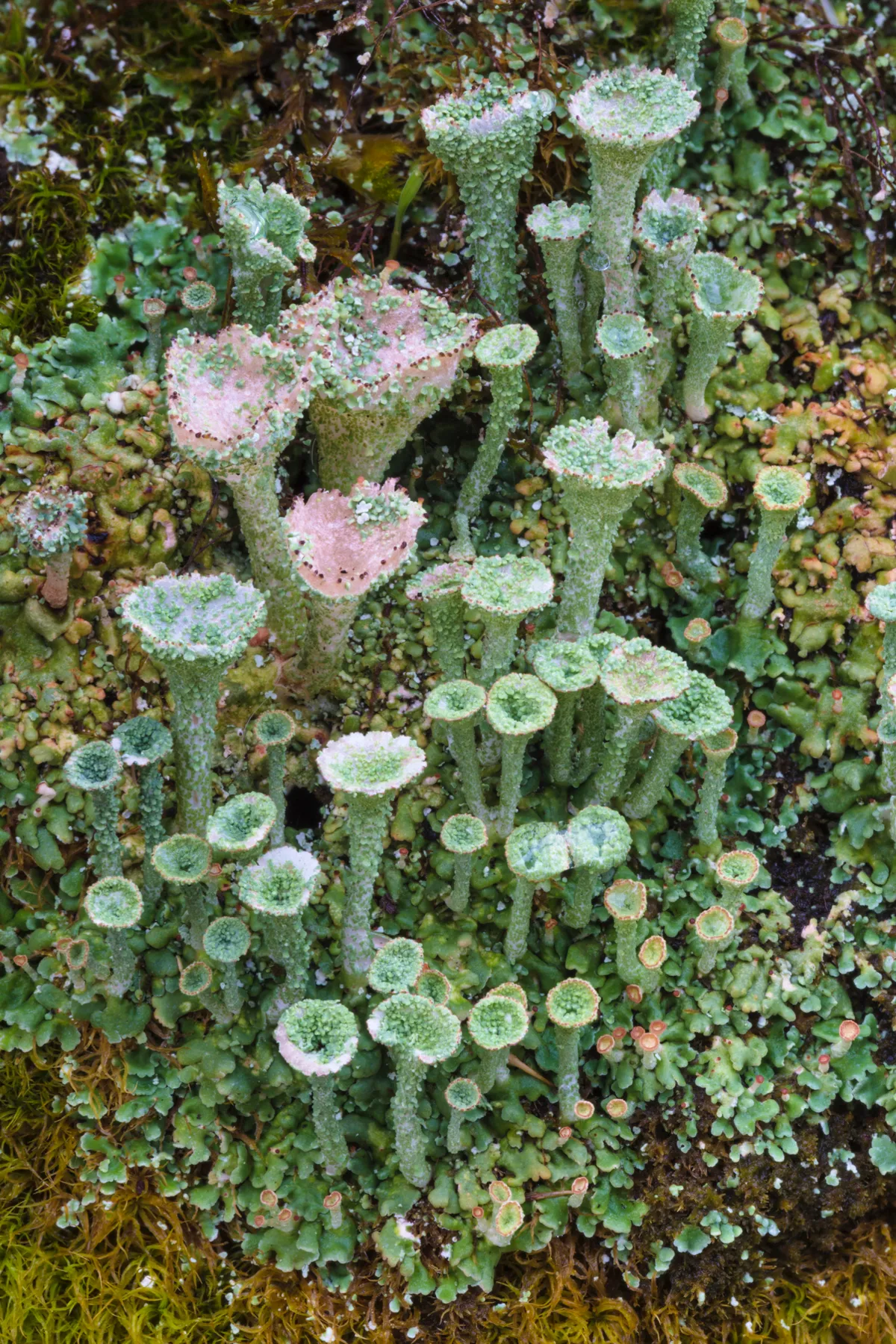
However cold and dark it gets, lichen don’t die off in winter. After all, they flourish in Antarctica. During unfavourable conditions, they simply sit it out and become dormant. If these life forms – a partnership between fungi and algae – had a motto, it might be: “Steady as she goes”.
They grow extremely slowly and live an extremely long time, often centuries, taking climatic extremes in their stride. (The oldest-known specimens, found in the Arctic, are 8,600 years old.) Lichen are tremendously diverse, but come in three main forms: crustose (crusty), foliose (leafy) and fruticose (often bushy, hairy or stringy).
Pixie-cup lichen (pictured above) belongs to the bushy group. To appreciate its otherworldly structure, you need to get down to lichen level. Its ‘pixie cups’ are greenish-grey stalks that end in what looks like a funnel or strange miniature goblet. The surface is grainy, as if pebbledashed.
Bewick's swan (Cygnus columbianus bewickii)

Crowds of wild swans make the perfect winter spectacle in frosty fields and on mist-wreathed lakes, throwing beautiful shapes as they feed, preen and jostle for space. Some are orange-and-black billed mute swans, resident throughout the year, and these are joined by two migratory species.
Bewick’s swans come from Arctic Russia, whooper swans (the larger of the pair) from Iceland, and both have elegant black bills splashed with sunflower yellow. Their voices are utterly different, too. While mute swans are – despite their name – not exactly silent, they can’t compete with the spine-tingling, discordant babble of honks and bugles of these winter visitors.
At the Welney Wetland Centre in Norfolk, part of the low-lying Ouse Washes floodlands, you can see all three species at daily swan feeds. Whoopers are most abundant, with about 10,000 birds in recent winters, compared to up to 1,000 Bewick’s.
A recent study has found that the latter’s migration strategy is adapting in response to milder winters in continental Europe. The main wintering population has shifted east, with many more Bewick’s swans ‘stopping short’ in the Netherlands and Baltic for the whole season, rather than pushing on to traditional haunts in Britain and Ireland. Those that do still visit tend to arrive later and leave earlier.
Beard lichen (Usnea)
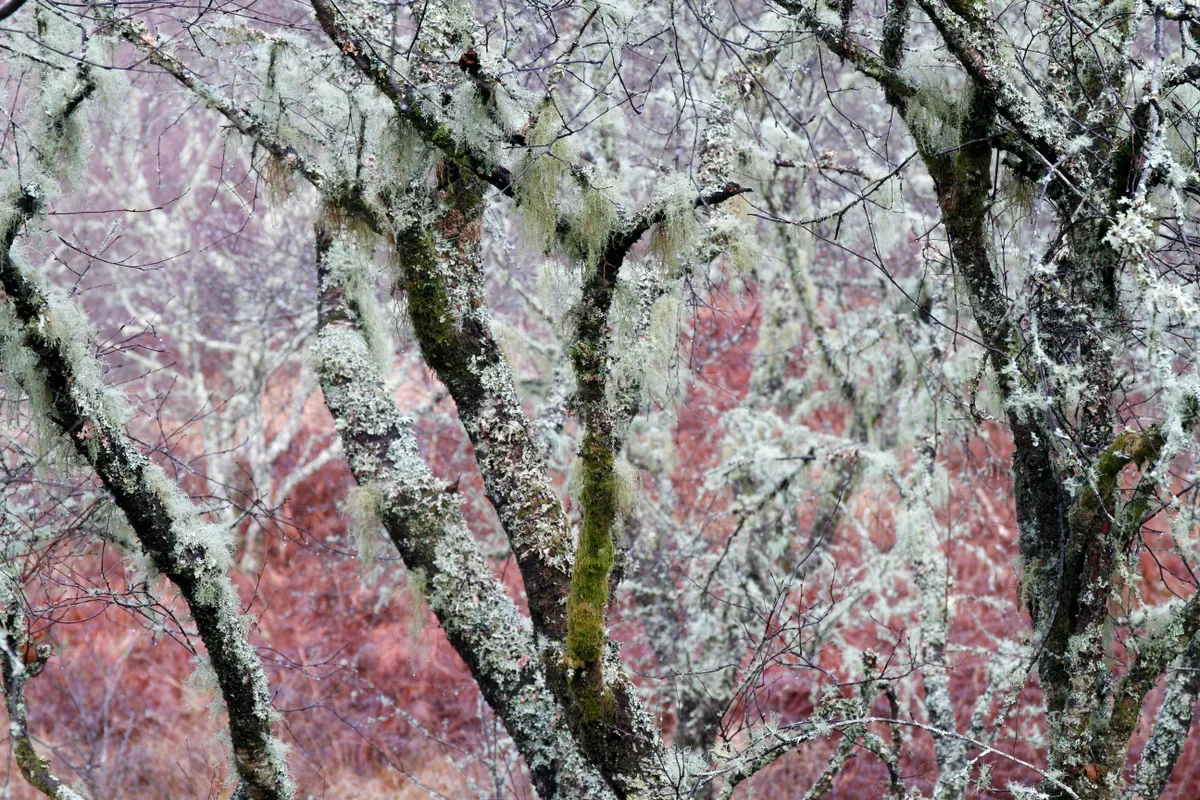
These wonderful lichens hang off tree trunks and branches in great beardy tufts. Their filigree form (known as ‘fruticose’) captures rain and dew, so frequently glistens – stand underneath and there is a constant patter of dripping water. The side of a tree with the most luxurious growth indicates the direction of the prevailing wind. There are several similar greyish-green species, of which the best known is probably Usnea subfloridana. It thrives in clean, damp air – particularly in the north and west. As air quality improves, it is recolonising urban areas.
Grey partridge (Perdix perdix)
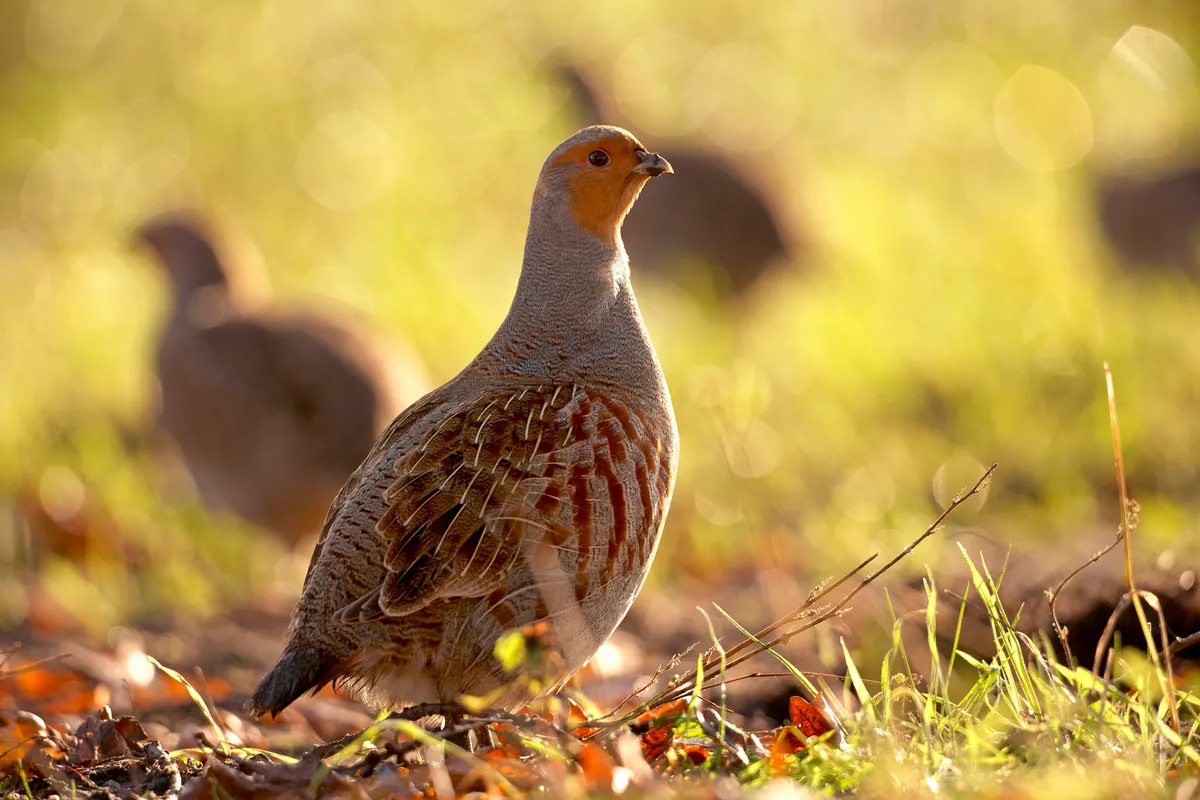
Far outnumbered by the red- legged partridges released in their millions on shooting estates, grey partridges are today scarce in Britain and Ireland. It’s the same across western Europe, as the messy field margins and arable weeds they need for nesting and chick-rearing have been lost.
Coveys of grey partridges used to be easy to see in winter among the post-harvest stubble – if not in pear trees – but less so now crops are grown year-round. Having evolved in windswept steppes, the birds tough out driving rain and snowby simply hunkering down.
The grey partridge's scientific name, Perdix perdix, is an example of a tautonym, where the genus and specific name are the same.
Eurasian otter (Lutra lutra)
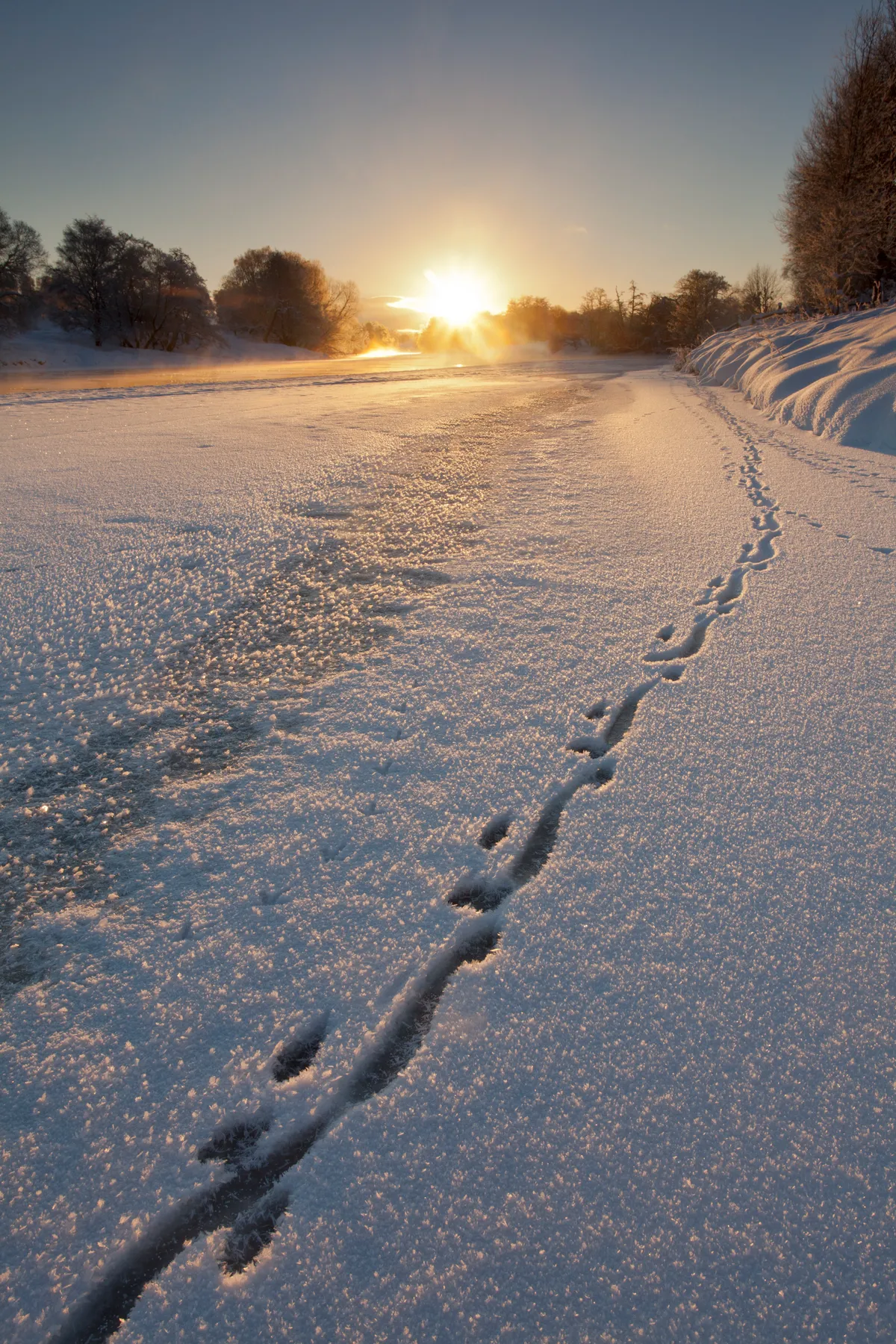
Wild mammals can seem elusive during winter, but there are tracks to be followed. Interpreting the trails is rewarding, though far from easy – not least because the prints of dogs, cats and sheep can confuse the picture.
One species to look for, now that its population in lowland Britain is resurgent, is the otter. The classic otter paw print has five toes, usually (but not always) with an impression of the webs. Look too for tail scrape-marks, muddy slides beside the water and droppings, or spraint, studded with fish scales and bones.
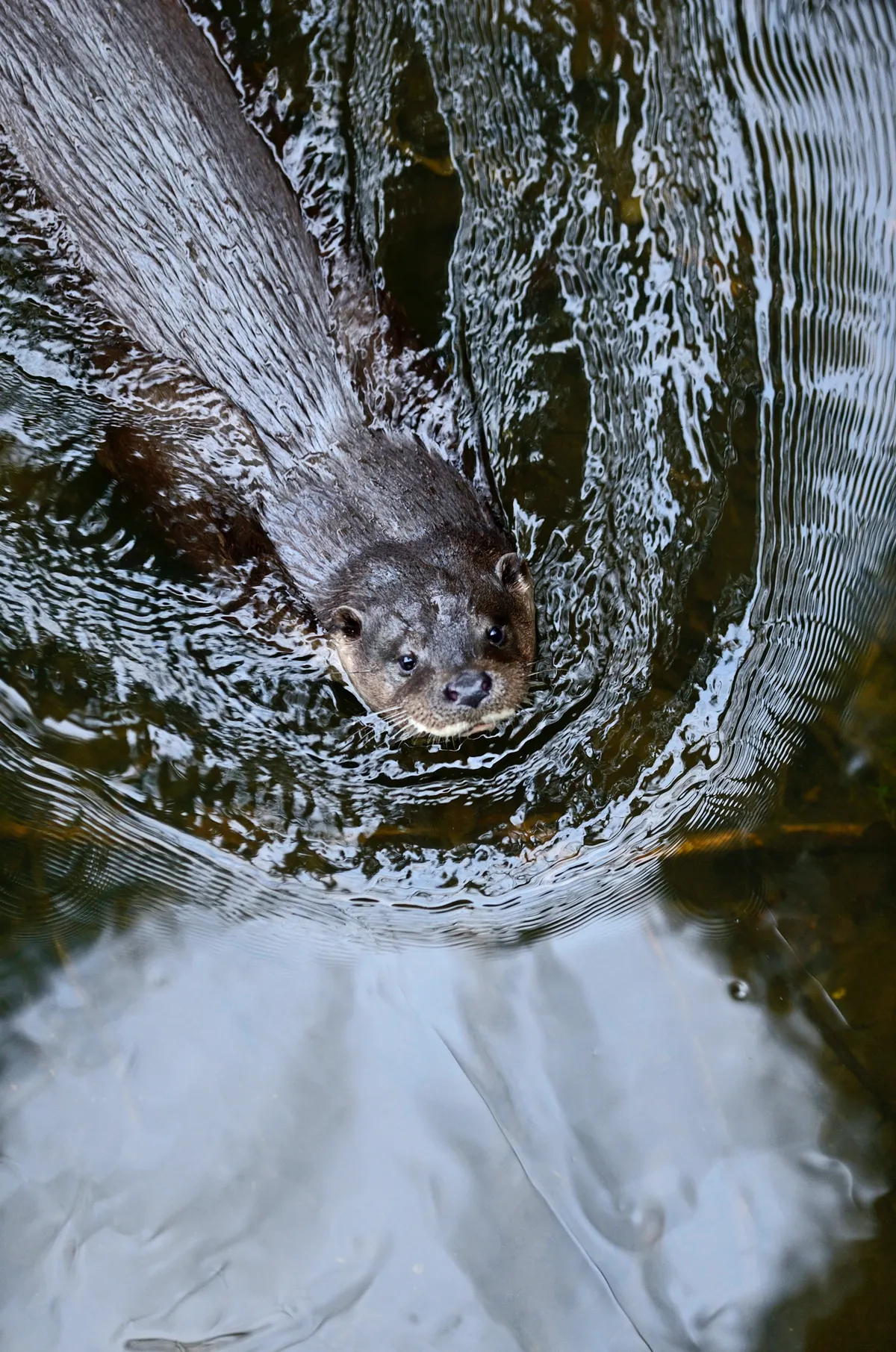
Away from Scottish coasts and quiet backwaters, otters in Britain are largely nocturnal or crepuscular (active at dawn and dusk). But in winter scarcity of food forces more of them to hunt in broad daylight, giving you a better chance of seeing one. The trend towards soggier winters might help these animals by making it easier for them to move through flooded lowlands.
The Eurasian otter's scientific name, Lutra lutra, is an example of a tautonym, where the genus and specific name are the same.
Learn more about otters:
Eurasian wren (Trogolodytes trogolodytes)
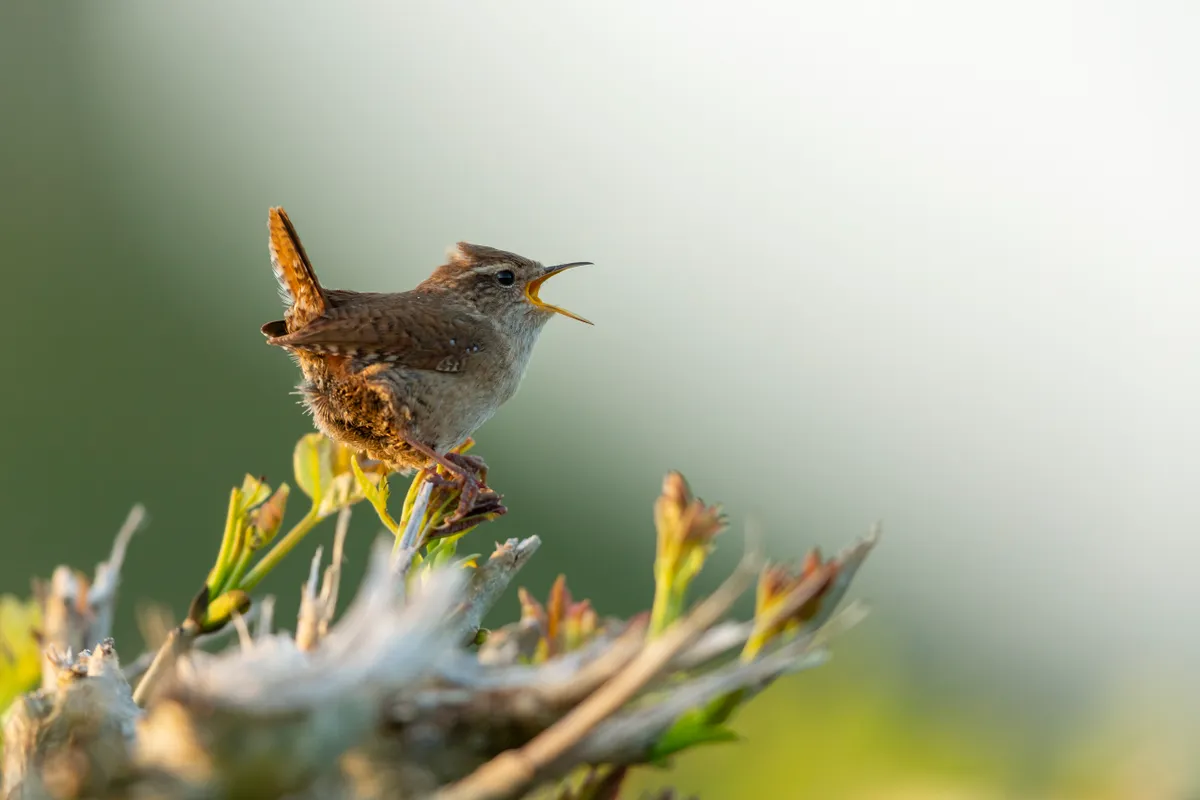
By now, most small insectivorous birds have left for sunnier climes or switched diet to fruit or seeds. Bucking the trend is the mouse-like wren, which exploits its niche year-long. It seems miraculous that the little bird finds enough invertebrate fuel, and it must forage nonstop. Melissa Harrison, in her nature diary The Stubborn Light of Things, writes of the joy of observing garden birds like the 10g wren, which are “never less than a gift: winged emissaries of wildness, beautiful and perfect”.
When temperatures drop, every long midwinter night poses a serious challenge for a small bird. The smaller you are, the faster you lose body heat, the narrower the margin between survival and succumbing to the cold. So the stakes are high for the tiny wren, which weighs around 9–10g – fractionally more than a new pound coin. Even if it fluffs out its plumage and joins one of the communal winter roosts for which this species is known, the mouse-like bird will by dawn have lost nearly all of the weight it put on during the previous day’s foraging.
Fascinating research published in 2016 by the British Trust for Ornithology (BTO) and University of East Anglia showed that the impact of winter weather has led to physical divergence between wrens in the north and south of Britain.
Wrens checked by bird ringers in the country’s mildest region, south-west England, were found to be on average 5% lighter than those in north-east Scotland, our coldest, most frost-prone area, where extra size offers an evolutionary advantage. It may not sound like much, but for our third-smallest bird (after the goldcrest and firecrest) it could just make the difference between life and death.
The Eurasian wren's scientific name, Trogolodytes trogolodytes, is an example of a tautonym, where the genus and specific name are the same.
Daisy (Bellis perennis)
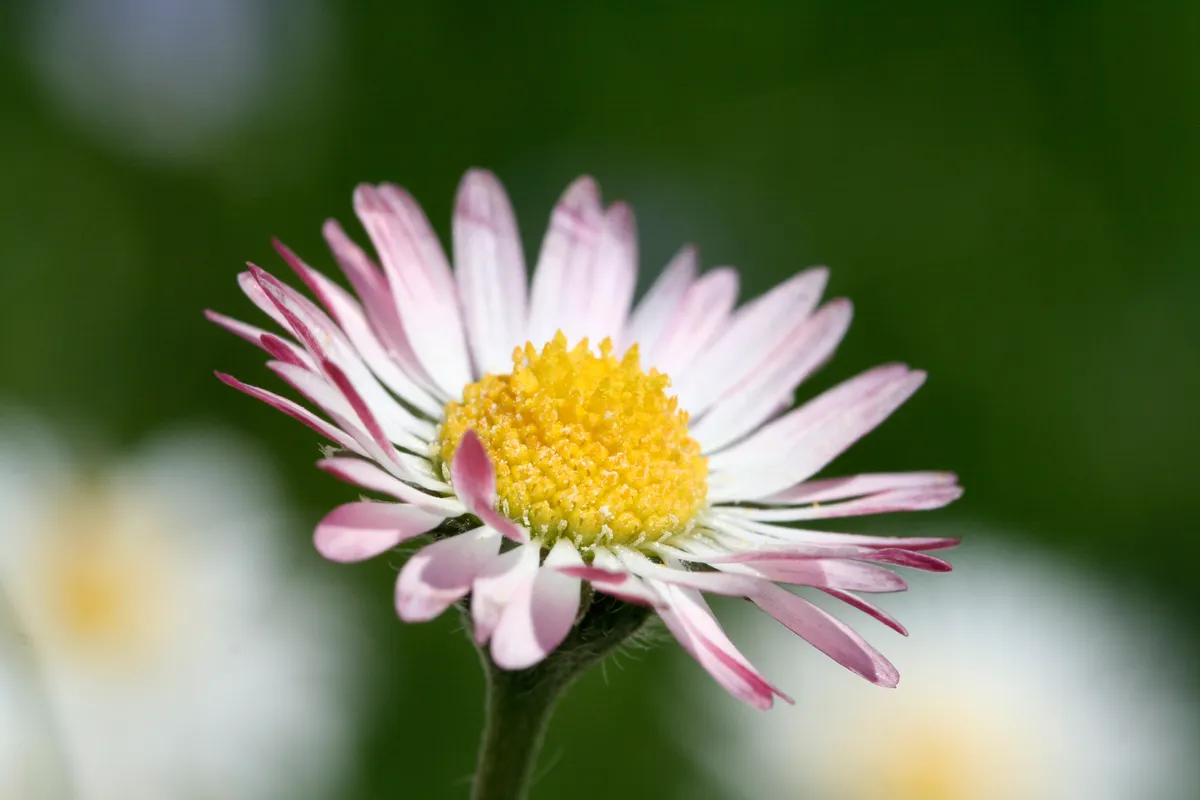
Cheerful and hearty, widespread in town and country yet often overlooked, the daisy is in many ways the house sparrow’s floral cousin. Just as the ‘umble sparrer’ regularly occupies first place in the RSPB Big Garden Birdwatch, so this cosmopolitan ‘weed’ has in recent years come top in the New Year Plant Hunt run by the Botanical Society of Britain and Ireland.
The latter survey, held over a few days at the start of January, aims to find out which plants are flowering in midwinter and how they are responding to our changing climate.
Crab apple (Malus sylvestris)
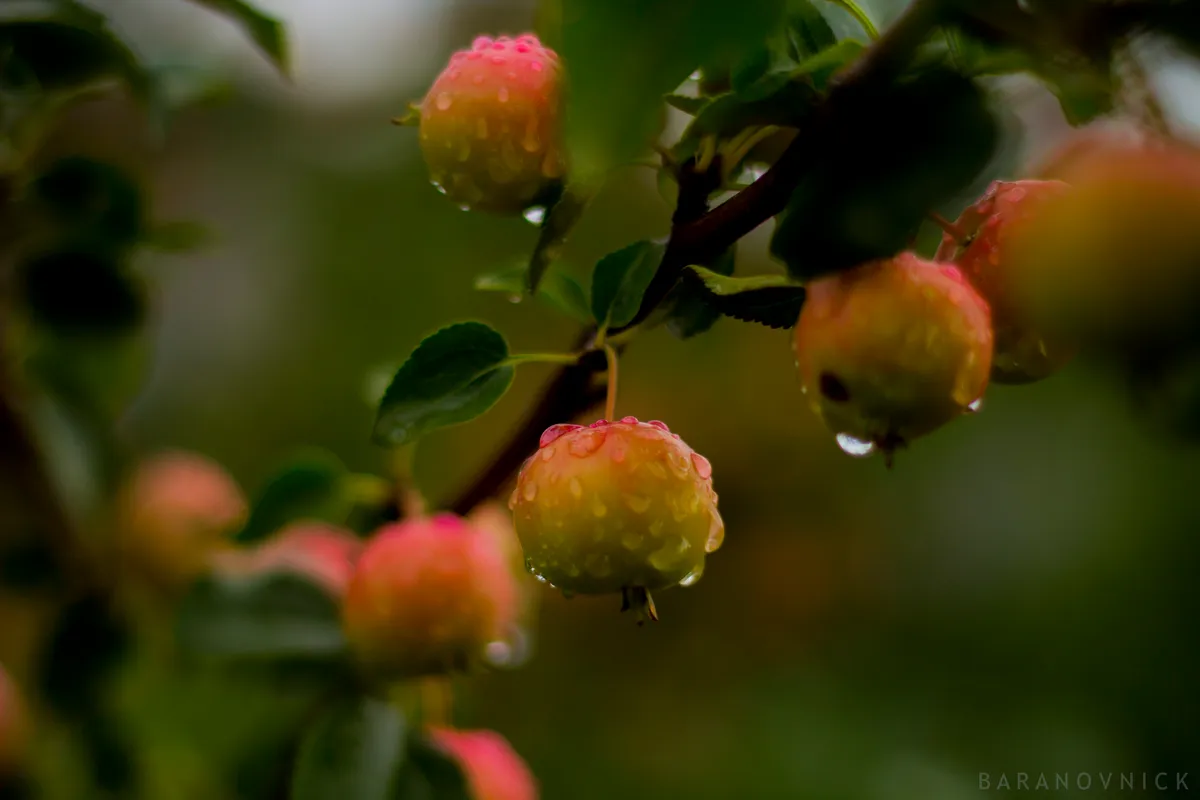
January is traditionally the month for wassailing, the hopeful pagan custom in which apple trees are blessed with song and dance to ensure good times ahead. Domestic or cultivated apple trees originated on hillsides in Central Asia, though they have grown wild in the British Isles for centuries and old orchards make fabulous habitats for wildlife.
However, the true native apple is the crab apple: a shorter, naturally thorny tree with small, tart red or yellow fruit. It is an ideal garden tree, and now is planting season.
Learn more about crab apples and other fruits:
Snow bunting (Plectrophenax nivalis)

Inuit people peoples have 100 words for the white stuff, so the old saw goes, but there were once almost as many in the British Isles. The nature writer Robert Macfarlane has researched serval pages' worth, including numerous Shetland terms that precisely describe different types of falling snow: feel, flukes, moor-caavie and skald. Snow buntings, arguably the toughest small birds on earth, have seen them all.
In Britain, the only place these blizzard-lovers nest is in high tops of the Cairngorms, particularly exposed carries that remain snowbound much of the year. Further north, their main circumpolar breeding range encompasses windswept tundra and boulder fields. Scottish poet Kathleen Jamie, in her luminous book Surfacing, describes how, as the polar winter arrives, these hardy little birds are finally "chased out of the Artic by the darkening days."
They end up on our shingle beaches and salt marshes - the bleaker, the better. You might think there would be nothing to eat here, but the buntings somehow eke out a living by poking around for dried seeds. Flocks of them are surprisingly hard to spot among the shingle, marram grass and other low-growing coastal plants. when a flock takes off, however, they are transformed into swirling snowflakes.
Hazel dormouse (Muscardinus avellanarius)
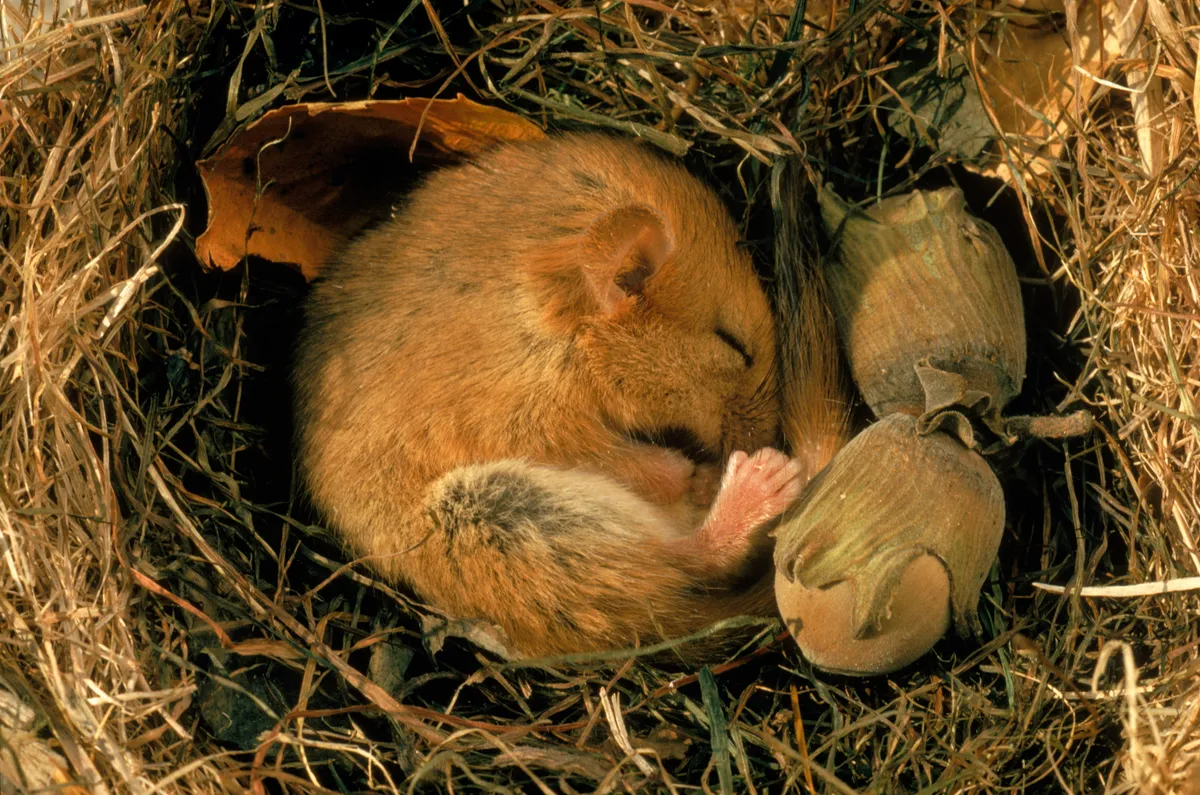
By now, hazel dormice should be living up to their name and snoozing for all they are worth (dormientes is Latin for sleeping). This is not really sleep, but hibernation, a physiological state so profound that the body chills with ambient conditions to within a whisker of freezing.
Hibernation is not a strategy to escape the cold, but an adaptation to food shortages in which low body temperature reduces energy consumption. Dormice rely on easily digestible foods such as fruits, seeds, flowers, insects and fungi, all of which are scarce in winter. So, rather than waste energy in fruitless searches, they weave a snug nest, often at the base of a tree or under leaf litter, and switch all metabolic functions into standby mode.
Hibernation can be disrupted by unseasonal warmth or changeable weather patterns, both of which may be contributing to the species’ decline in the British Isles. “We can’t do much about these weather patterns,” admits Ian White of the People’s Trust for Endangered Species (PTES). “But we’re reintroducing dormice to suitable areas where they’ve gone extinct and making sure those sites are managed appropriately, by coppicing and restoring the hedgerows that the dormice use to disperse.”
Long-eared owl (Asio otus)
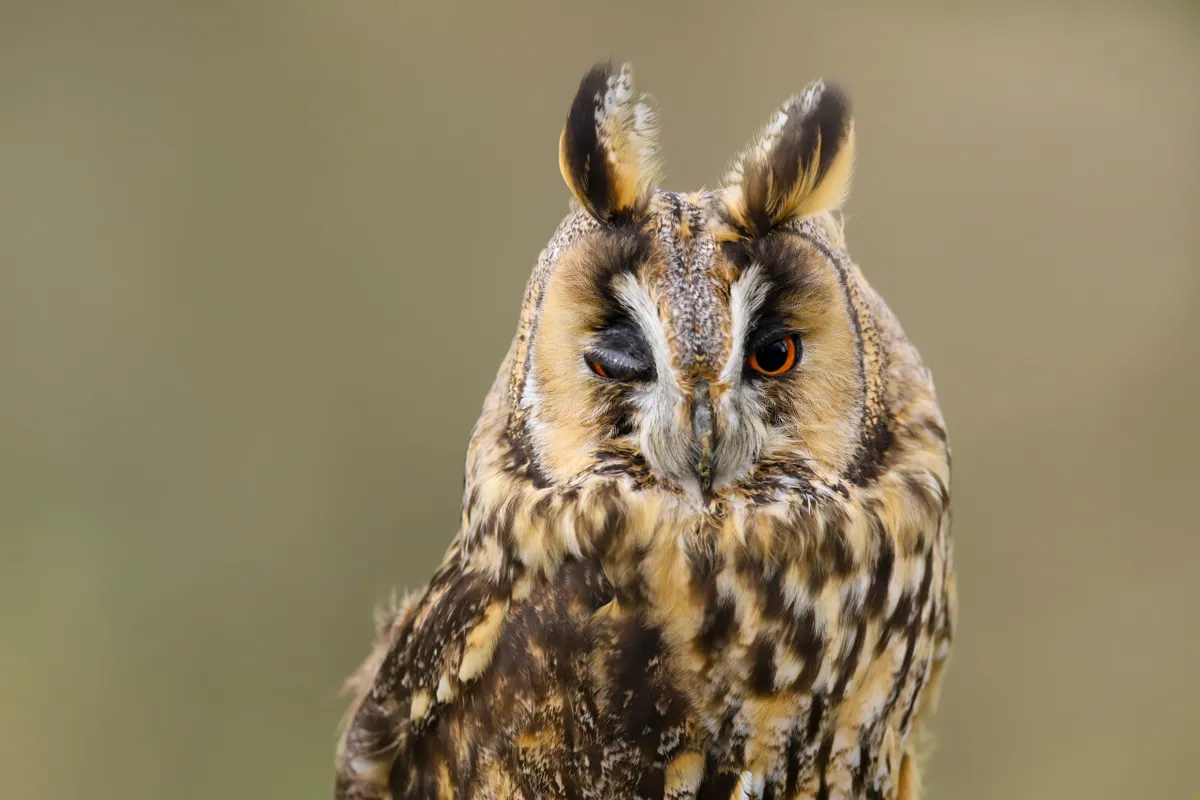
These are the main owls in Ireland, perhaps because it has no tawny owls, which are chunkier and comfortably out-compete their distinctively ear-tufted relatives.
In Britian, the situation is quite different. Here, long-eared owls, fondly nicknamed 'LEOS' by birders, are by far the rarest naive owl, been everywhere scarce and elusive. your odds of a sighting improve in winter, with the arrival of seasonal migrants form across the North Sea. Uniquely among European owls, they often roost communally.
Common haircap moss (Polytrichum commune)
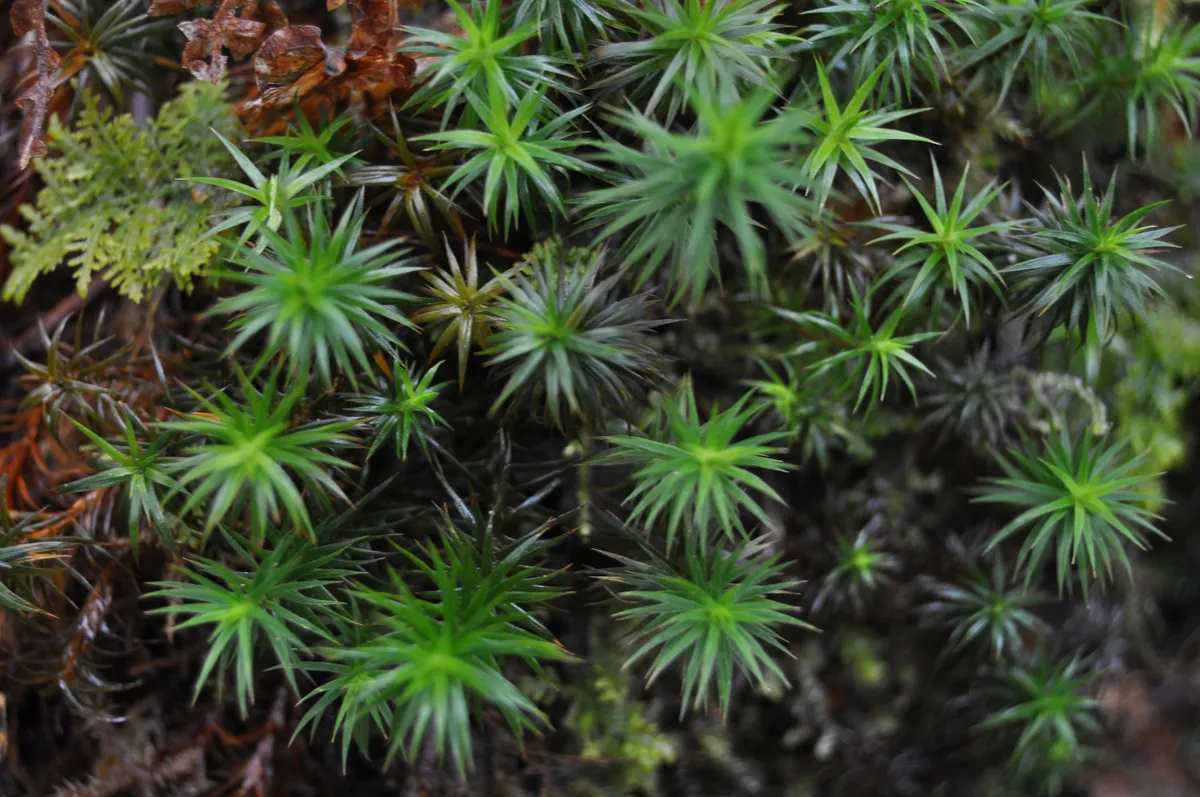
There's growing interest in the potential of moss to help cut urban pollution, with companies offering mss-covered street furniture said to filter out certain airborne pollutants. Leaving aside the hype, there's no doubt that moss is an attractive addition to the concrete jungle.
But it's outside cities that mosses play a key ecological role. by soaking up rainfall like sponges, reducing the flood risk. Species such as common haircap spread quickly to form beautifully springy evergreen carpets in moss, bogs and wet woods.
Red squirrel (Sciurus vulgaris)
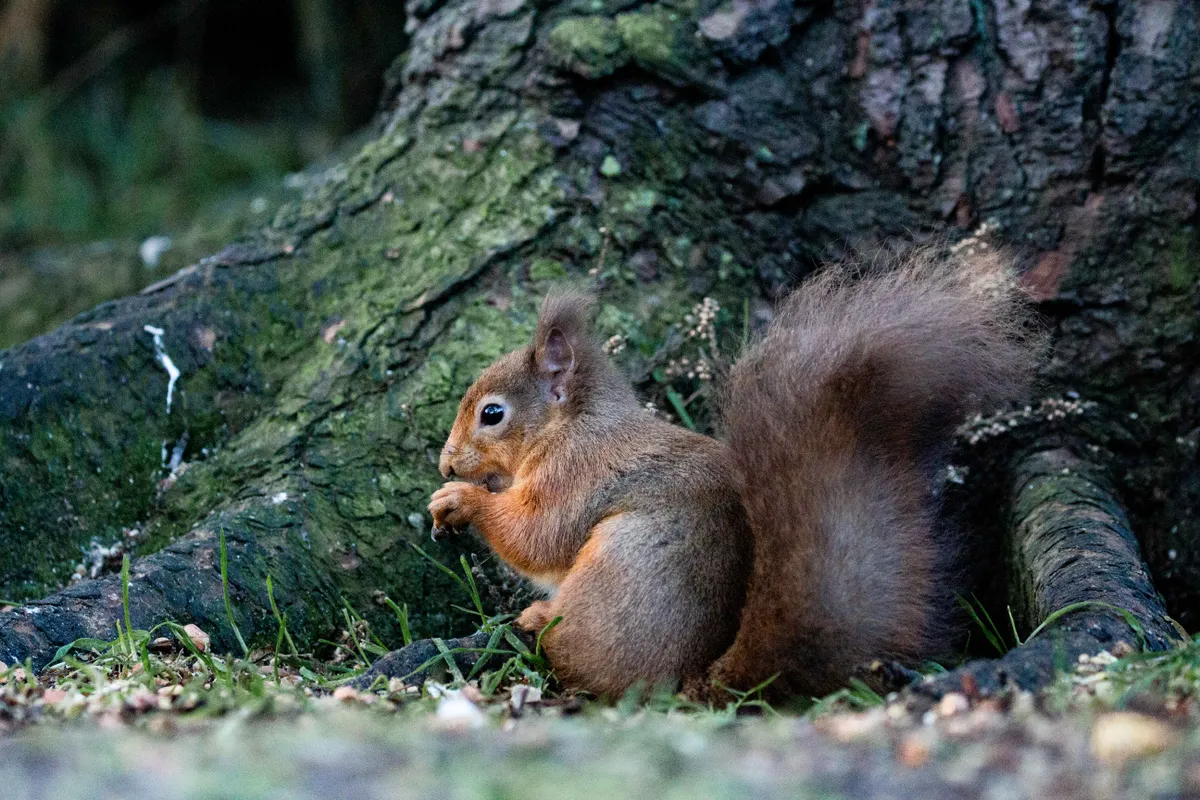
After decades of decline, are squirrel Nutkin's fortunes finally on the up? Large amounts of money are being spent on helping our naive squirrels hold their own in Scotland, norther England and North Wales (largely by culling invasive greys). Meanwhile, the latest ambitious reintoution plans will see these charismatic mammals return to Sutherland.
Shorter winter days can be a good time to see hungry animals foraging, especially if you stake-out a feeder they are known to frequent. Like their American rivals, reds don't hibernate, though they will sit out the harshest weather in their dreys.
Common polypody (Polypodium vulgare)
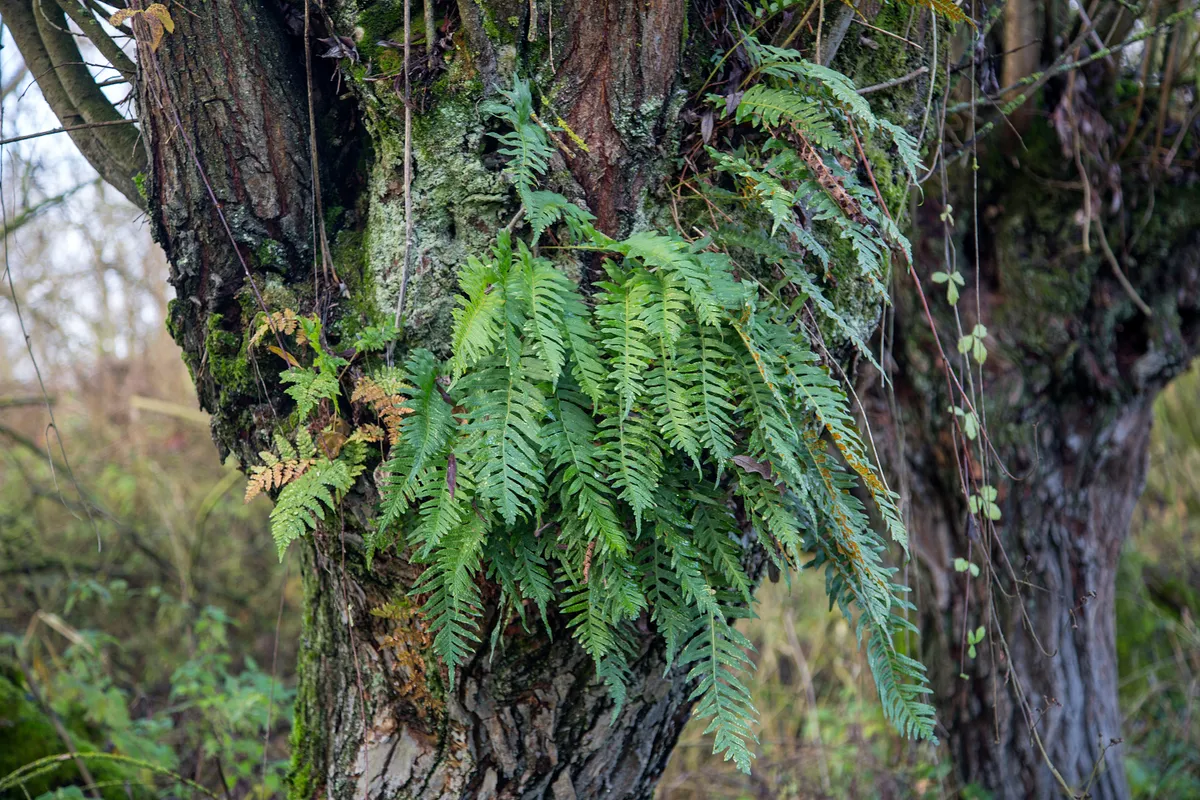
Pteridologists - botanists who study ferns - group these ancient survivors from the age of dinosaurs by the shape of their leaves. The common polypody is one of several species with leathery fronds divided into finger-like lobes. It clings to rocks and banks, usually near running water or in damp woods, and sometimes festoons moss-covered gnarly oaks. The 'tree ferns' add a dash of green to otherwise leafless winter branches, reminiscent of the bromeliads growing high above the ground in humid tropical forests.
Great tit (Parus major)
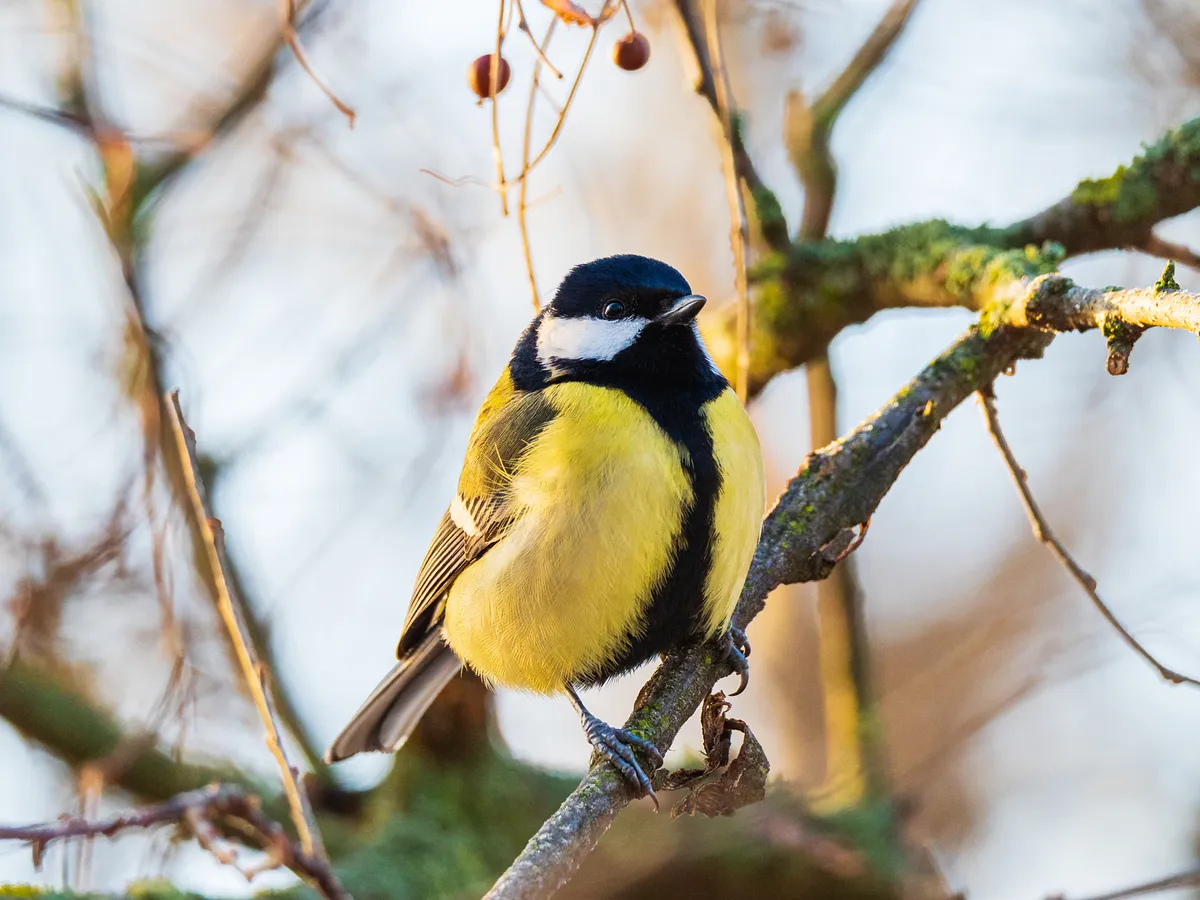
Great tits are the biggest and bolshiest members of their family, so they're higher in the pecking order than other tits at our garden bird feeders. in the winter flocks, males are also dominant over females - you can easily tell the sees apart, as the former have a thicker black belly stripe.
But a remarkable study at Lytham woods near Oxford has shown that individual great tits have their own personalities, too. some are bolder and take more risks, traits passed onto their young.
Herb robert (Geranium robertianum)
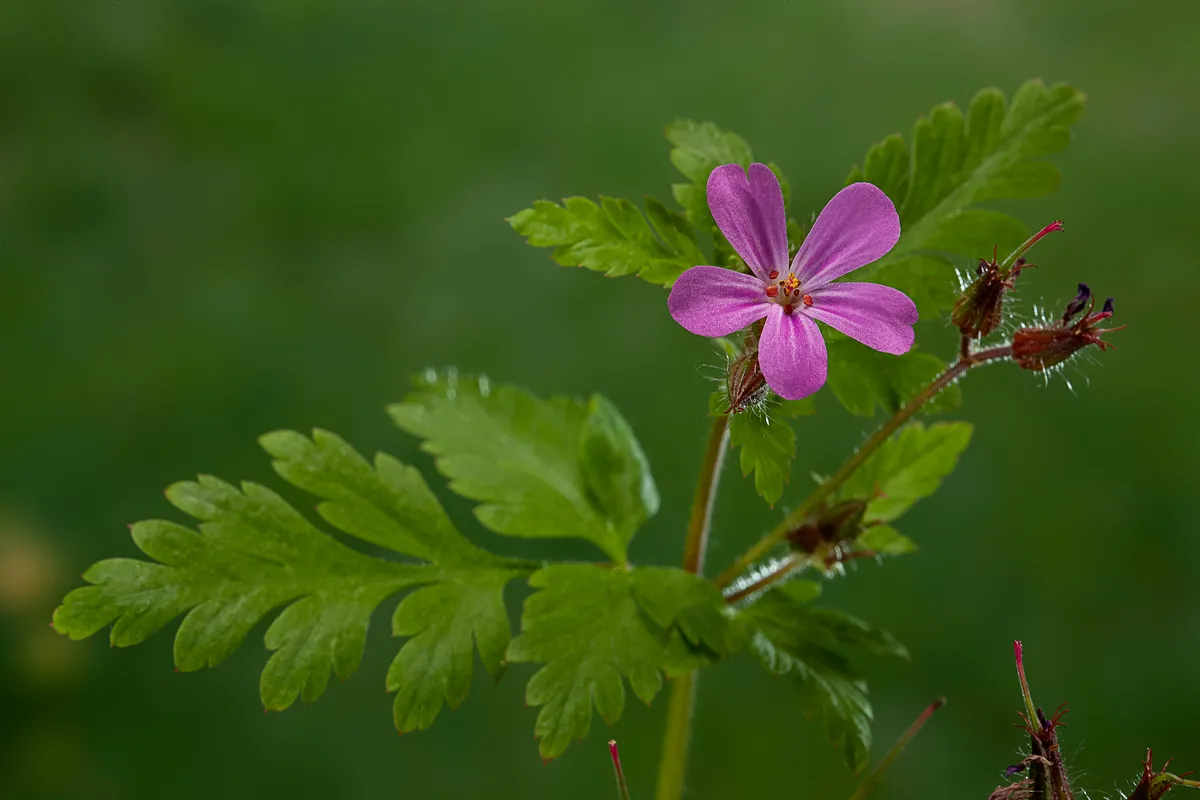
For a few years now, hardy naturalist have tried to see how many wildflowers they can spot in the New Year Plant Hunt. Amazingly, the average tally is around 20 species in full bloom. Daisy, dandelion, groundsel, gorse and herb robert are all commonly seen. This last species often dismissed as a mere 'weed', but it's a pretty little flower that brightens paths and waysides, often growing against walls or in cracks in paving.
Common yew (Taxus baccata)

Midwinter is the ideal moment to make a pilgrimage to see our most venerable conifers. Long before Christianity reached these islands, yews were sacred to the Anglo-Saxons and Celts, so they have a very long cultural history. Fittingly, they are also the oldest living things in Britain.
Our country supports hundreds of ancient yews aged at least 1,000 years, with four thought to have survived five millennia. Yet these mighty trees, some of which have split trunks and an enormous girth, enjoy little or no formal protection – even those growing in churchyards.
Birch bracket (Fomitopsis betulina)
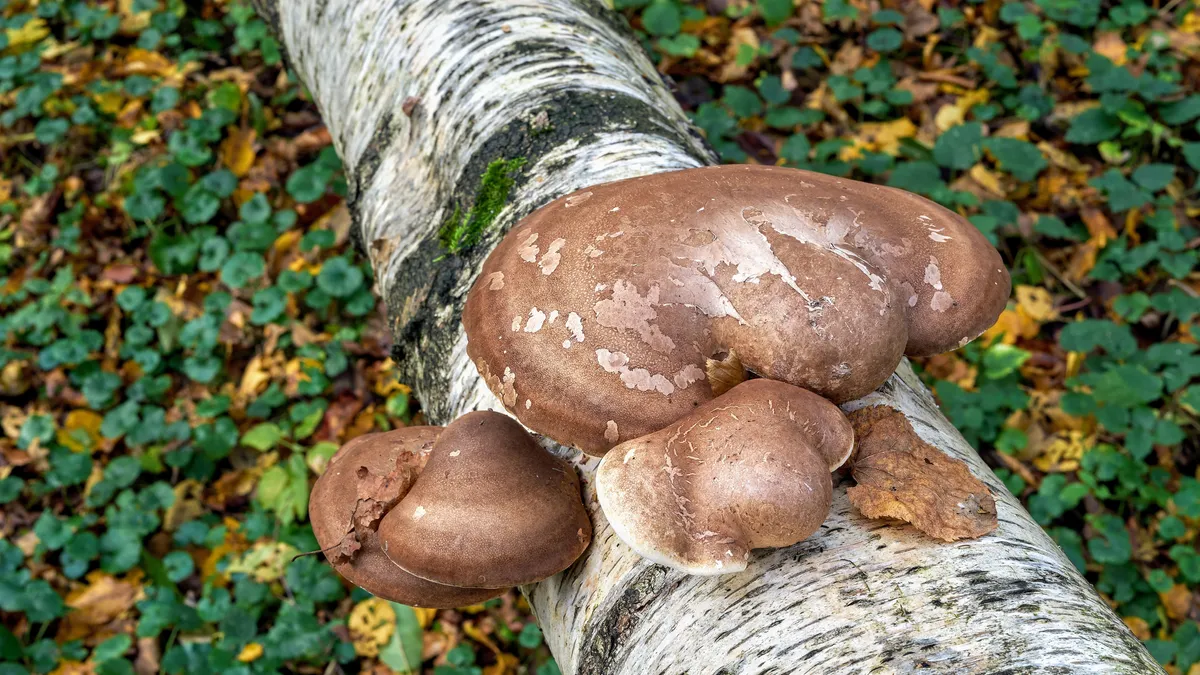
Some bracket fungi appear in summer then disintegrate, but others are sturdier and last longer, becoming more visible when deciduous trees lose their leaves. This abundant species is in the latter category.
Another name for it is birch polypore – the underside of its fleshy ‘fan’ lacks the gills found in many fungi, and instead is covered in pores, which scatter spores through the air. Birch rots fast because its heartwood (the tree’s dead core) is not hard, ensuring there is plenty of decaying wood for the birch bracket to colonise.
Gorse (Ulex europaeus)
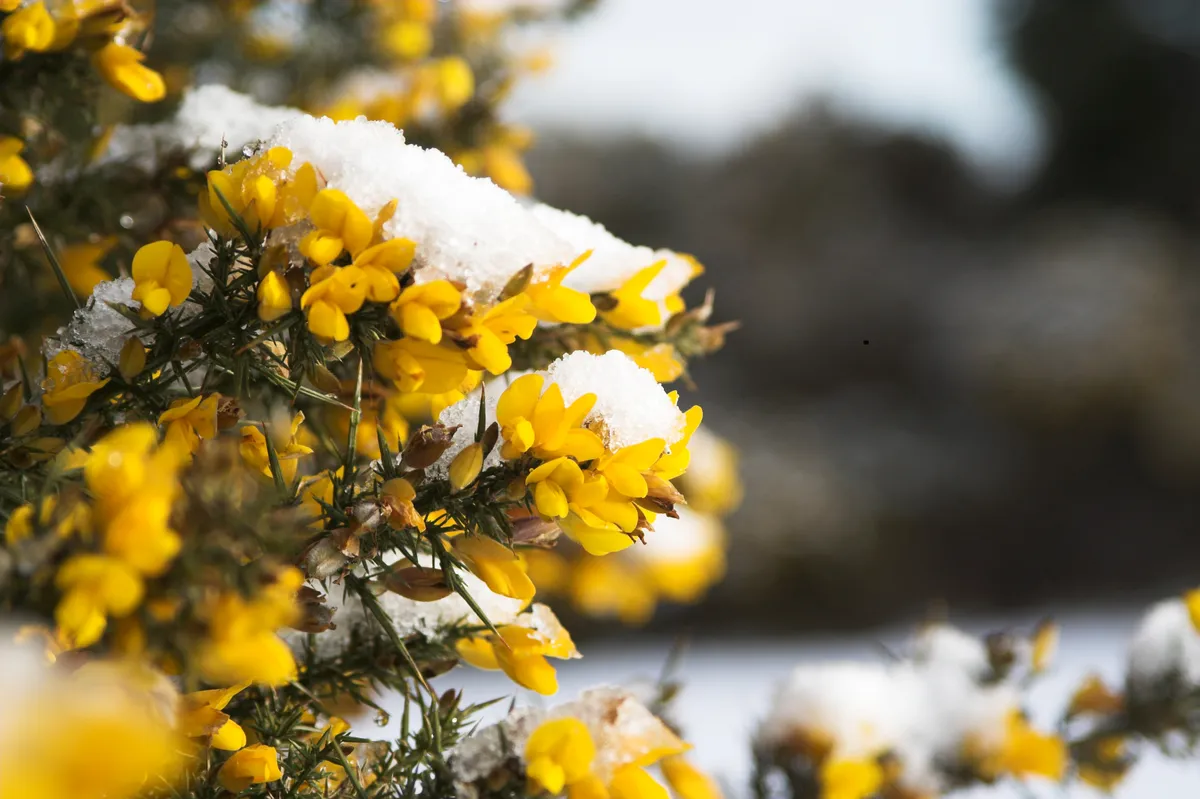
‘Kissing is out of fashion when gorse is out of bloom,’ the old saying goes. It wryly refers to the fact that gorse is one of the few plants in flower all year, adding a welcome golden glow to frosty heaths and commons.
The petals are edible – though best sprinkled on your salad in April or May, the peak flowering season – and, in warm sunshine, they release a delicious coconut or almond fragrance. Being evergreen, gorse offers valuable winter shelter to spiders and other invertebrates, as well as hibernating reptiles.
Grey squirrel (Sciurus carolinensis)
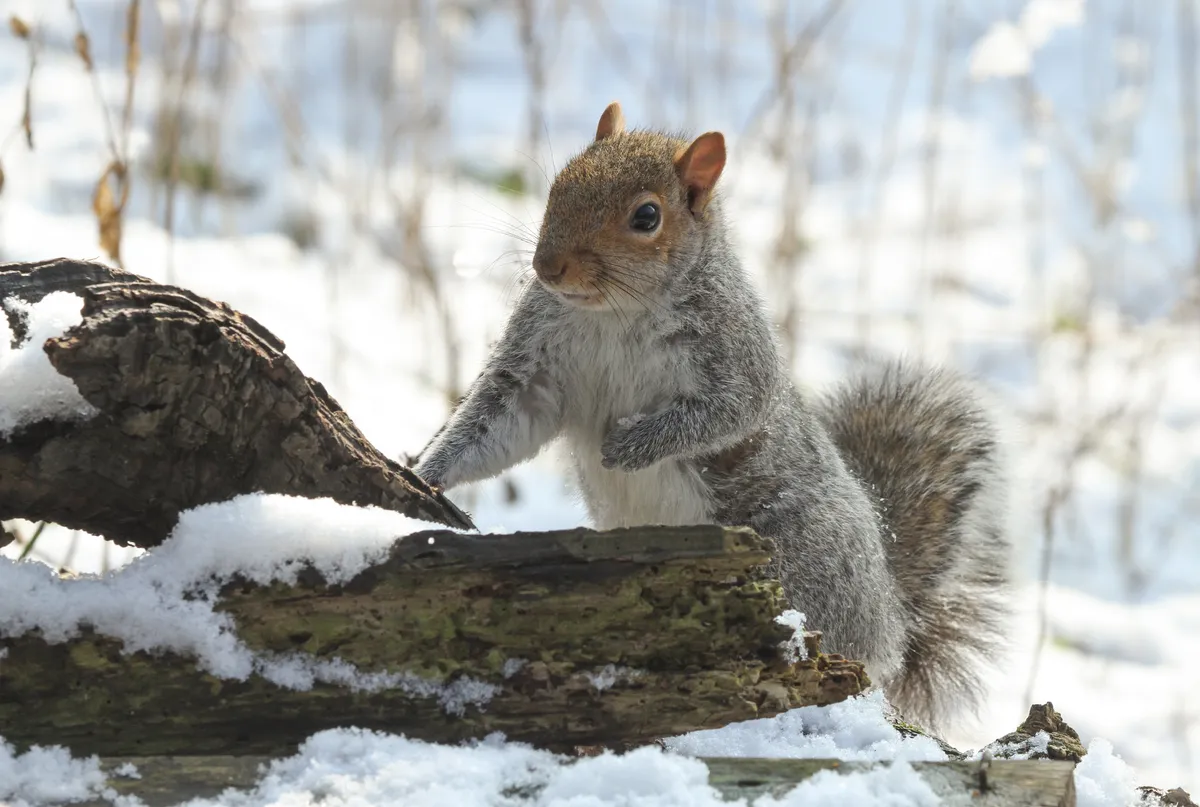
Often grey squirrels are seen merely as nuisances that pilfer bird food and debark trees. They’re held responsible for the plight of native red squirrels, too. But they are the closest many of us come to wild mammals, and at this time of year their frantic nose-to- tail mating chases are very entertaining.
Now the Sanger Institute in Cambridgeshire has sequenced the species’ entire genome, together with that of its red relative. The ultimate goal is to decode the squirrel- pox immunity of grey squirrels in case it can be passed to reds.
Cetti's warbler (Cettia cetti)
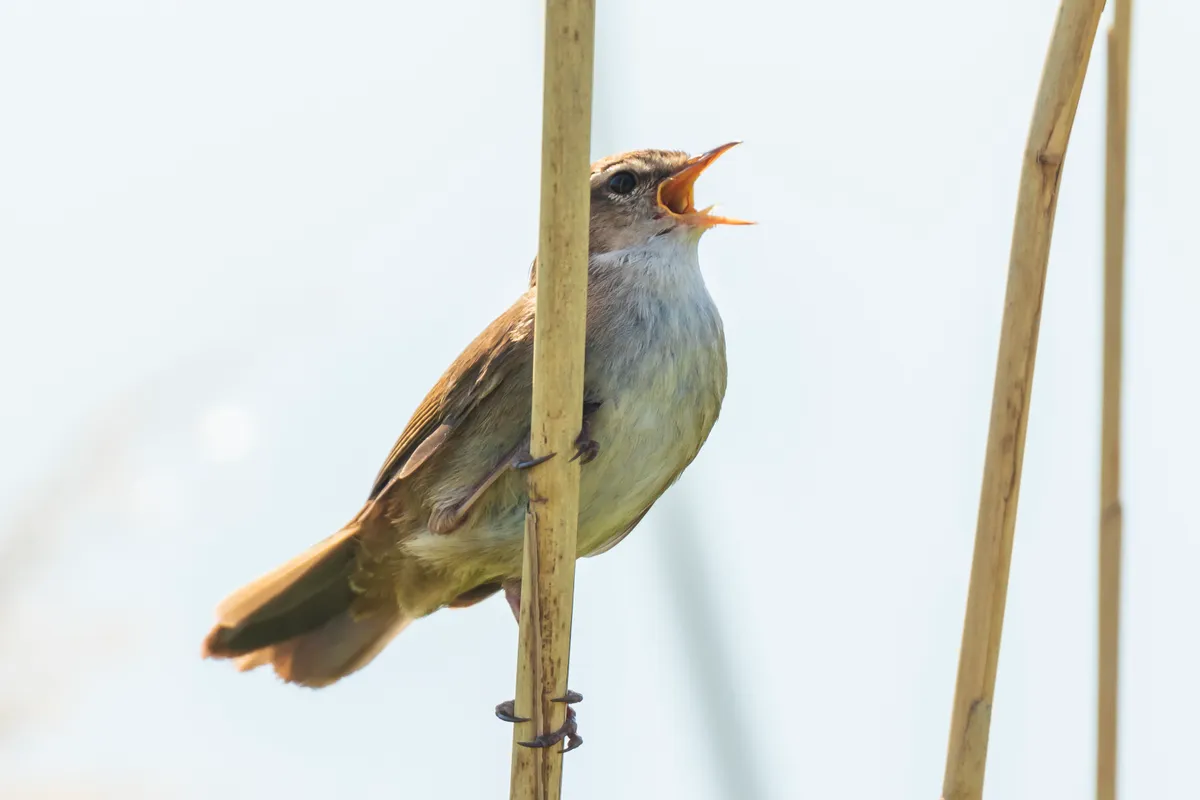
Cetti’s warbler sings year-round. A ‘little brown job’ of a bird, it seems to relish making us jump. Without warning, one will erupt into a burst of song from low down among reeds or waterside bushes, invariably remaining hidden.
For Paul Stancliffe of the British Trust for Ornithology, the staccato ‘titchititchititchi’ performance is like Tchaikovsky’s 1812 Overture (mnemonics are a useful way of learning birdsong). Since the 1970s, Cetti’s warblers have spread rapidly across southern Britain – numbers are rising exponentially.
Eurasian bullfinch (Pyrrhula pyrrhula)
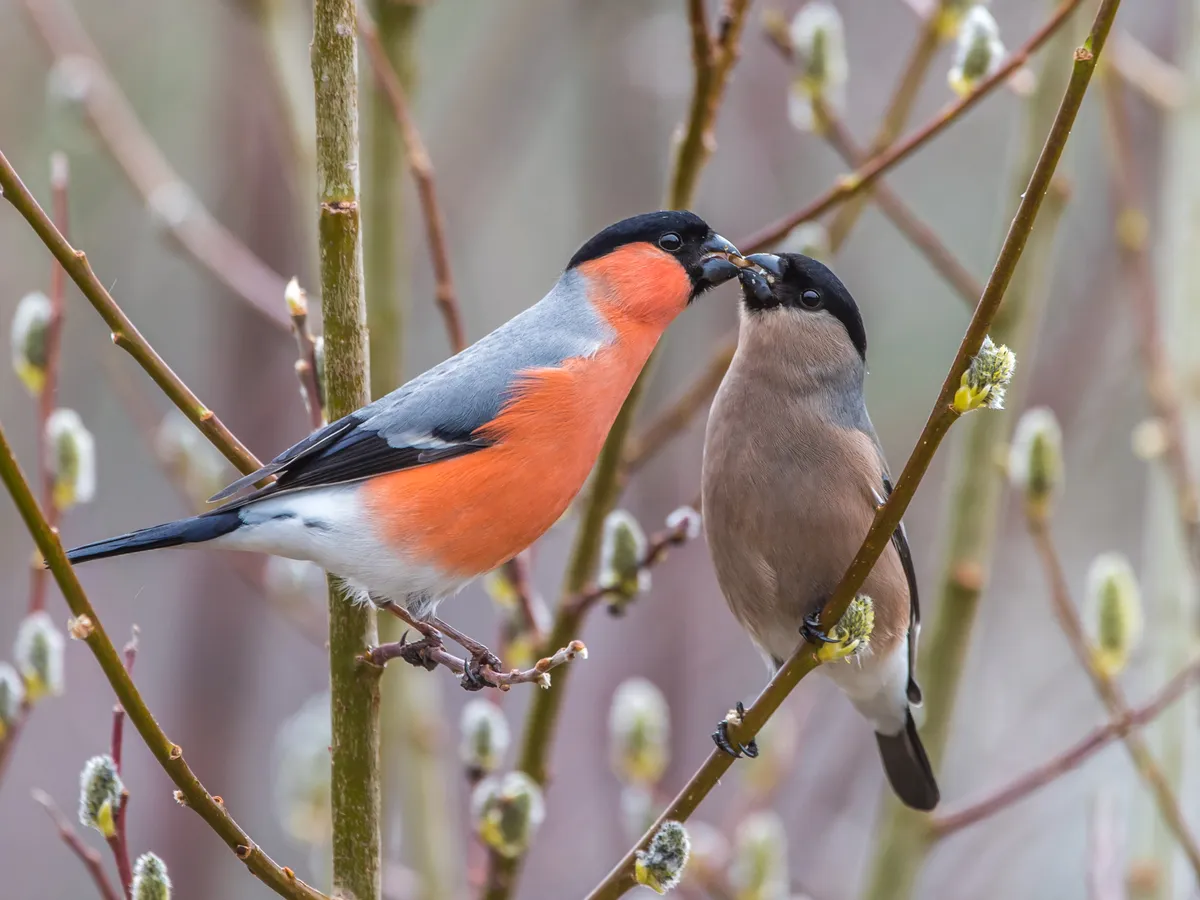
Research by ornithologist Tim Birkhead has shown that this portly finch is remarkably monogamous, perhaps more so than any other British songbird. It’s unusual to encounter a lone bird – a pair is far more likely, in the depths of winter as well as during the breeding season. The male and female constantly whistle to each other to stay in touch in thick hedgerows or scrubby woodland – a soft ‘pew, pew’. Your first glimpse is often of flashing white rumps.
The Eurasian bullfinch's scientific name, Pyrrhula pyrrhula, is an example of a tautonym, where the genus and specific name are the same.
Muntjac deer (Muntiacus reevesi)

First it was foxes, now deer are a growing urban phenomenon. Fallow visit Essex housing estates, reds venture into Sheffield and roe frequent many cemeteries, brownfield sites and railway embankments. But the deer most likely in urban gardens – at least in southern England, the Midlands and Wales – are tiny muntjac.
No bigger than border collies, they come to food scattered for birds in winter, and lush garden plants also prove irresistible. Muntjac breed year- round; one survey found that numbers in the UK have doubled since 1996.
Mistletoe (Viscum albums)
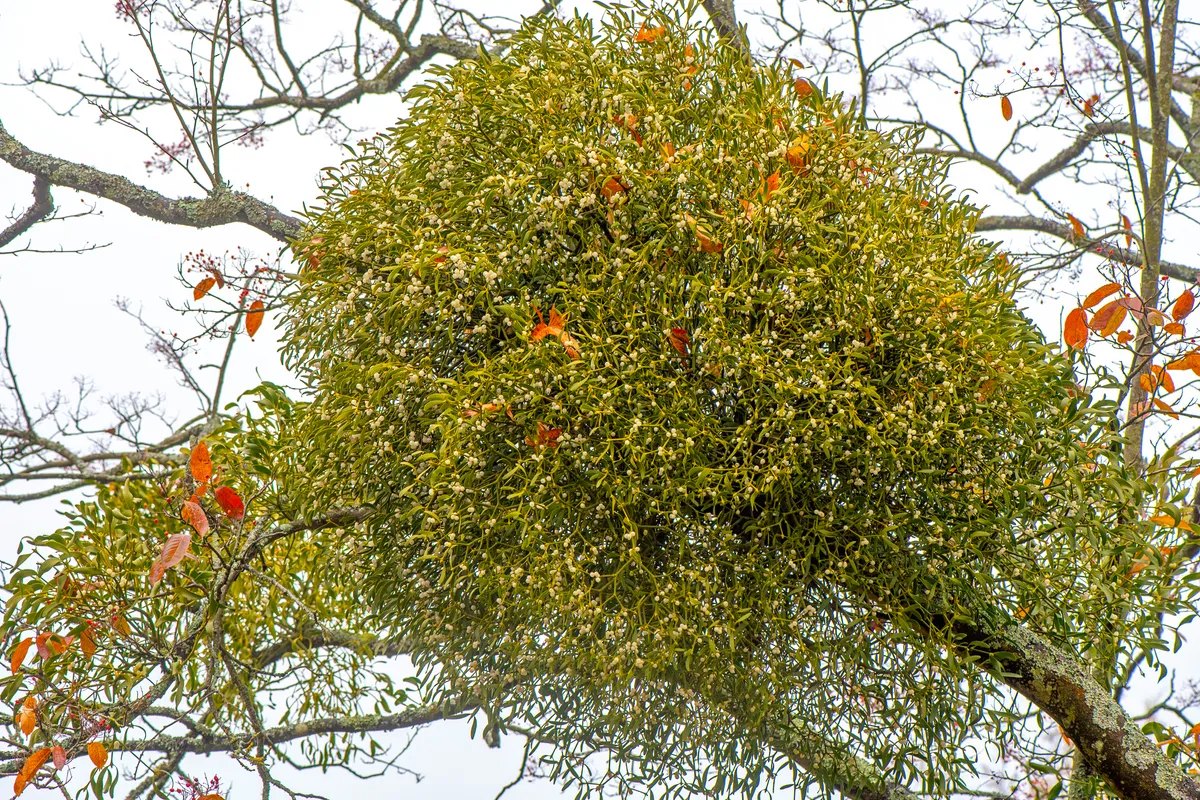
Bare leafless trees reveal shaggy clumps of this curious semi-parasitic plant, typically in apple trees, poplars or limes. Since mistletoe is evergreen, its untidy mass of oval leaves offers welcome shelter to overwintering invertebrates.
The gooey white berries – poisonous to us, like the foliage – are eaten by mistle thrushes, redwings, fieldfares and blackcaps, thereby dispersing the seeds to new host trees.
Mountain hare (Lepus timidus)
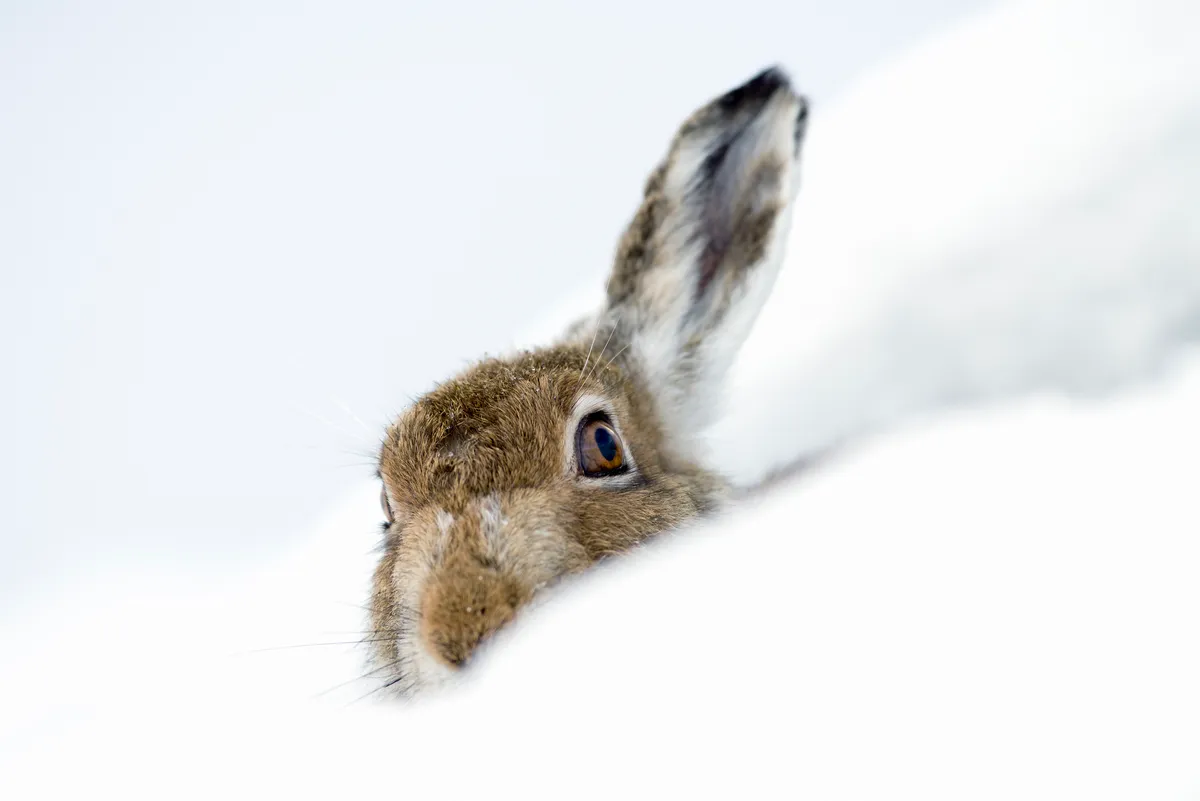
A winter white coat makes sense for Scottish mountain hares, which live mostly in areas that receive plenty of snow. But those living in the Peak District are often caught out, and are easy to spot against the brown of peat and dead heather.
Moors For the Future, a partnership between the Government, NGOs and utility companies, is gathering data on mountain hares, brown hares and rabbits to examine how distributions might be shifting as a result of changes in climate and land management.
Water rail (Rallus aquaticus)
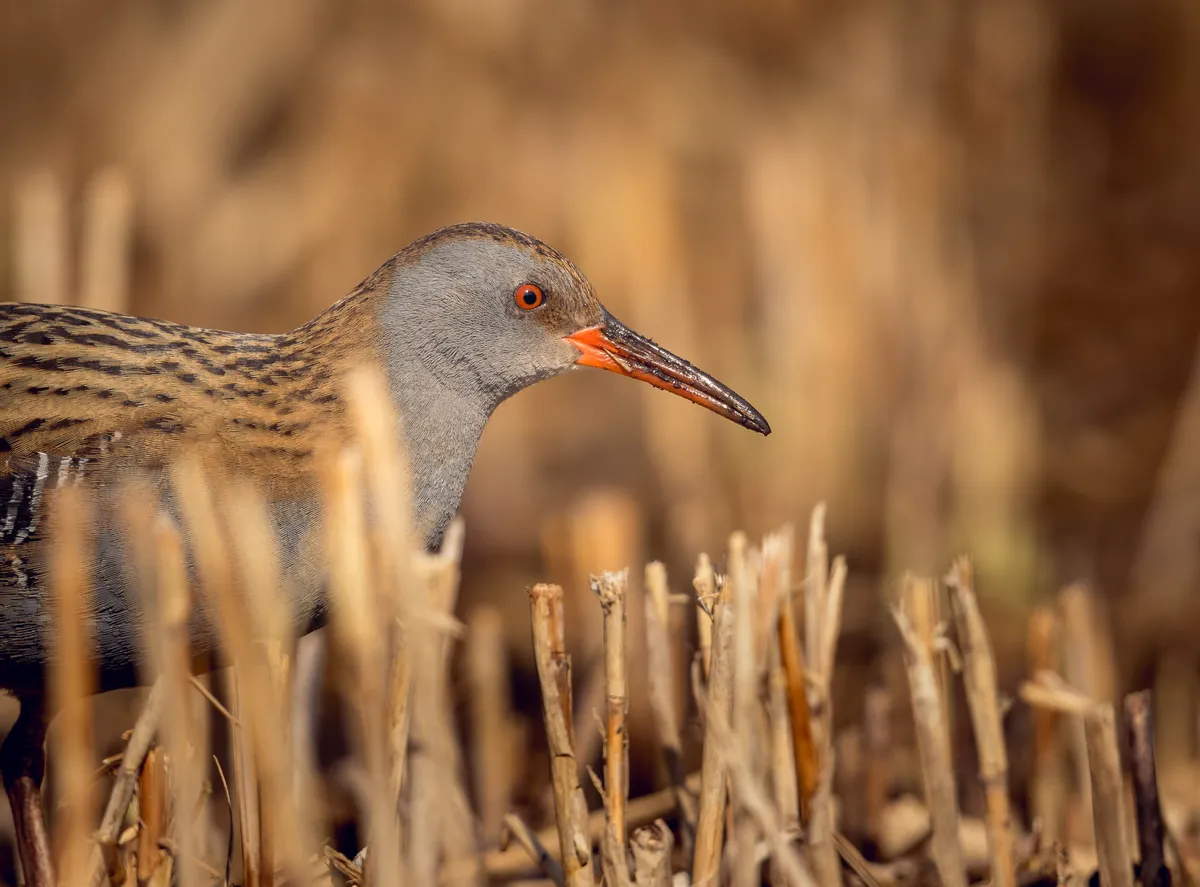
This slim, laterally compressed relative of the moorhen is much more often heard than seen, with its bizarre ‘sharming’ calls often performed as male-female duets and likened to piglets grunting and squealing. It’s difficult to tell from the calls how many birds might be present, and the birds’ secretive habits make reliable counts difficult – the estimated British population figure of 1,100 breeding pairs is probably too low.
Numbers are certainly boosted in winter by migrant visitors from northern and eastern Europe, which jostle with residents for feeding territories. Sightings increase as ice forming over shallow water margins forces the birds to forage in the open.
European golden plover (Pluvialis apricaria)
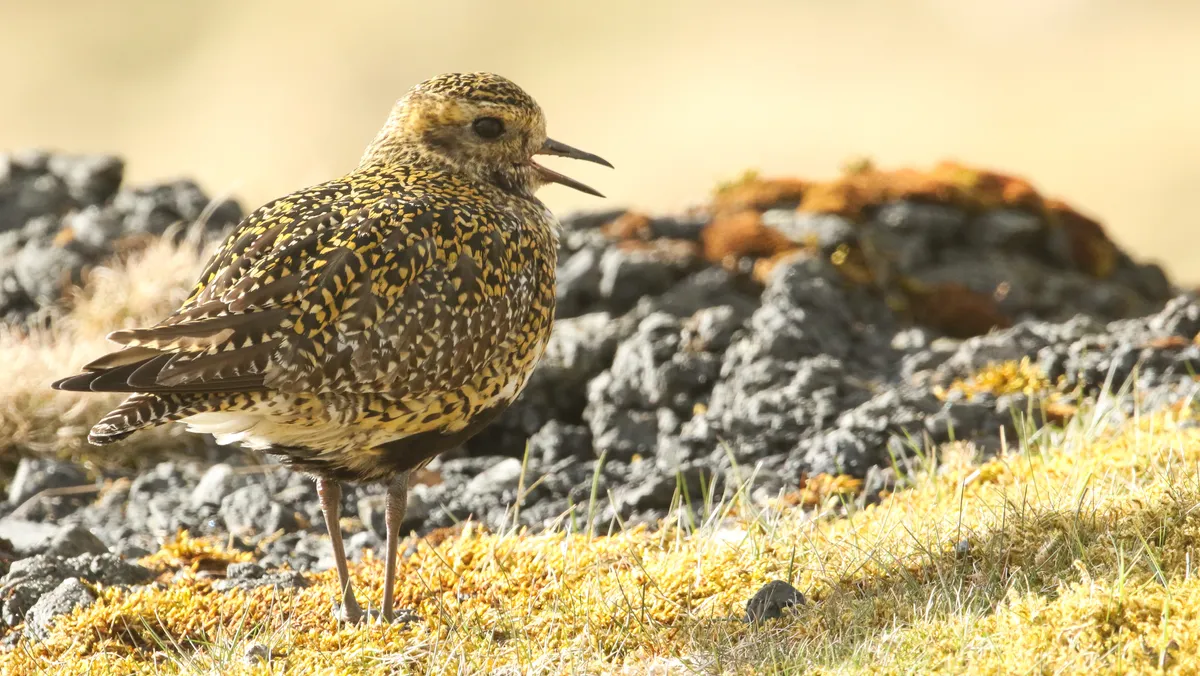
Britain is the only place where you can see golden plovers year round. Elsewhere, these handsome waders are fully migratory, and winter visitors greatly boost numbers here. For resident birds it’s a short hop from their upland breeding grounds to wintering areas on open farmland and coasts, where they abandon territorial behaviour and form large flocks, often with lapwings. Both species have white underwings, but golden plovers can be told apart by their narrow, more pointed wings.
Whooper swan (Cygnus cygnus)
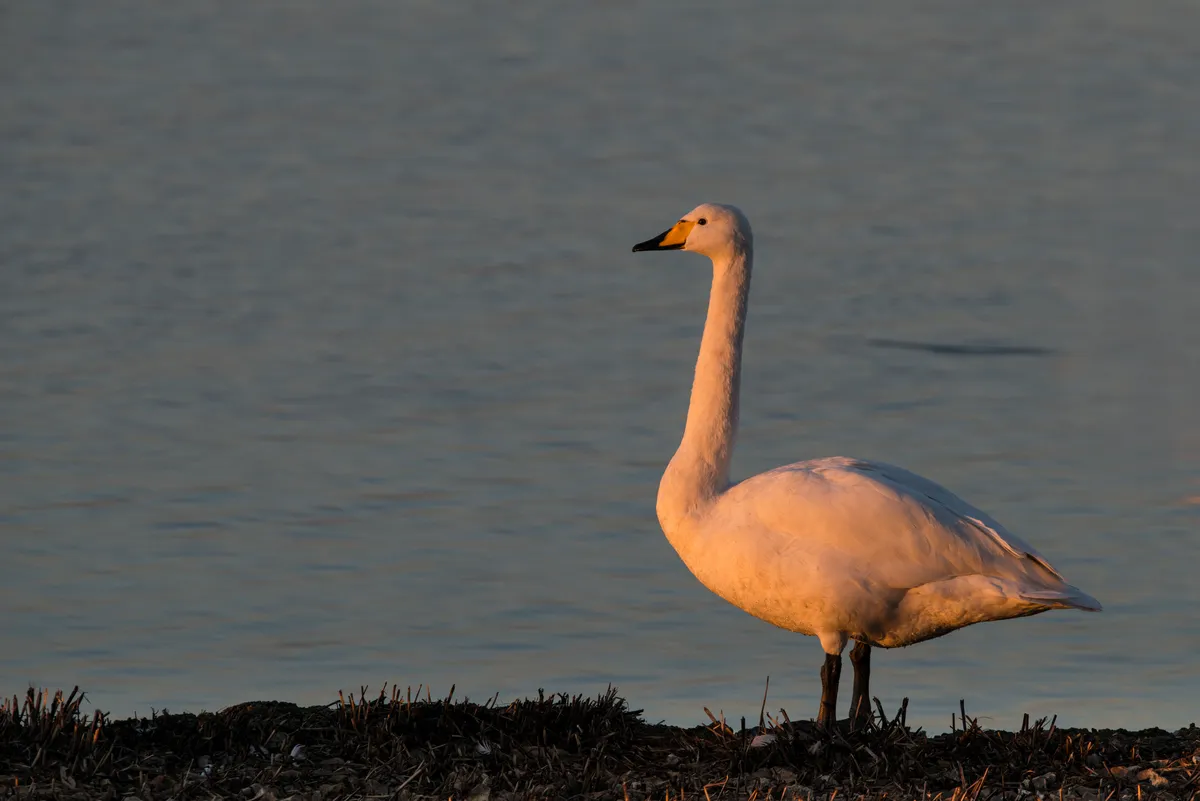
Birders talk about “wild swans” to distinguish whoopers and Bewick’s from our more familiar resident mute swans. Whoopers, from Iceland, are the larger of these yellow-beaked winter migrants. They feed in floodplains and arable farmland, each afternoon shuttling to lake roosts, mostly at reserves.
In full cry a trumpeting flock – like an out-of-tune brass band – is among the most spine-tingling sounds of winter. For close-up views, visit one of the daily swan feeds at WWT Caerlaverock, Martin Mere or Welney.
The whooper swan's scientific name, Cygnus cygnus, is an example of a tautonym, where the genus and specific name are the same.
Brambling (Fringilla montifringilla)
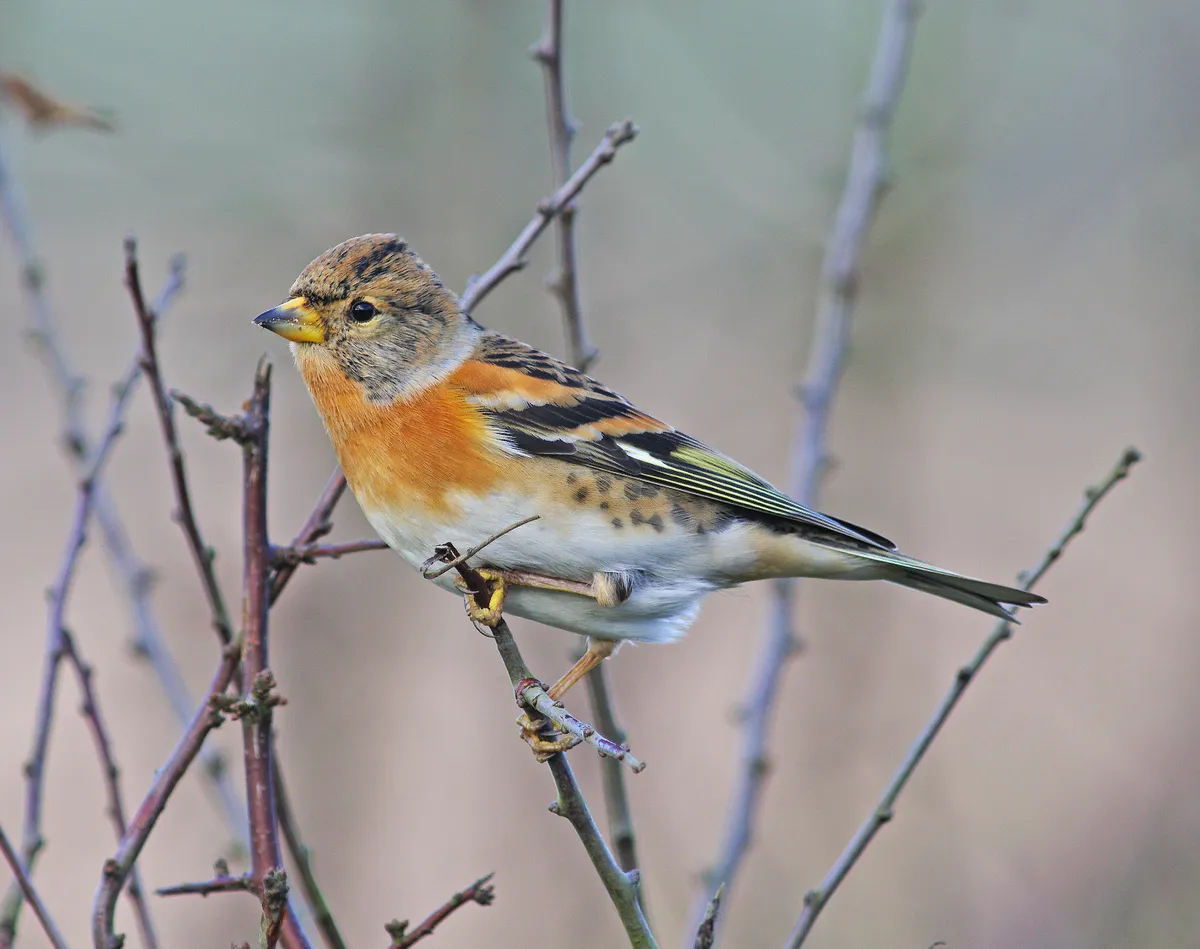
Flocks of finches at feeders, bouncing through hedges or scouring the ground for beech seeds, are always worth checking out, especially if at first glance you notice a mix of terracotta and flickering black-and- white that you might normally associate with chaffinches.
A closer look may reveal a seasonal treat – hungry migrant bramblings, over a quarter of a million of which visit Britain in a typical year. By late January the buff tips of their feathers are fading, revealing the more strident hues of the male breeding plumage – orange on the chest and shoulders, black and grey on the head and neck.




